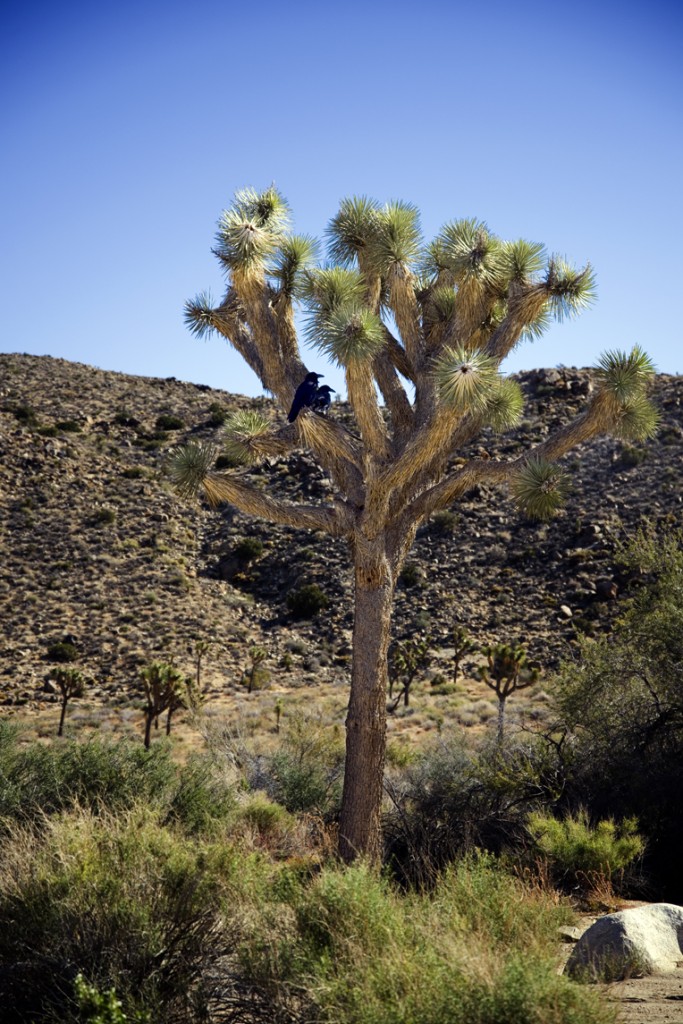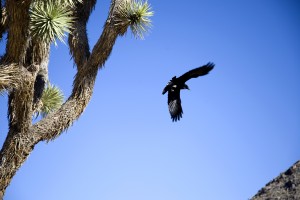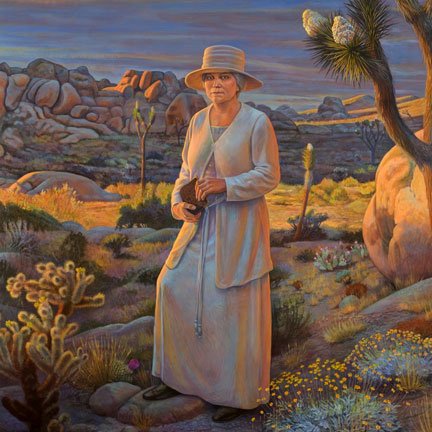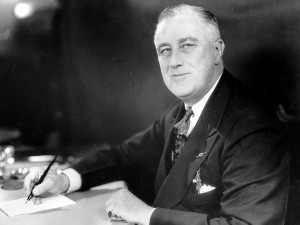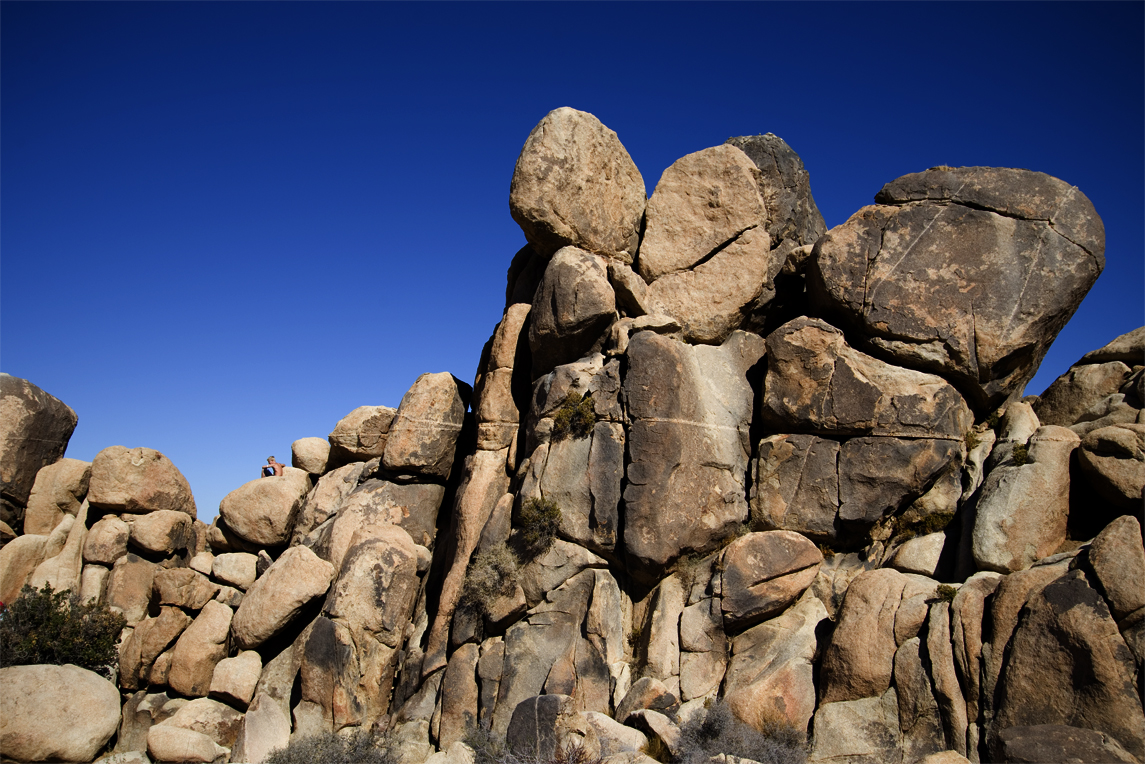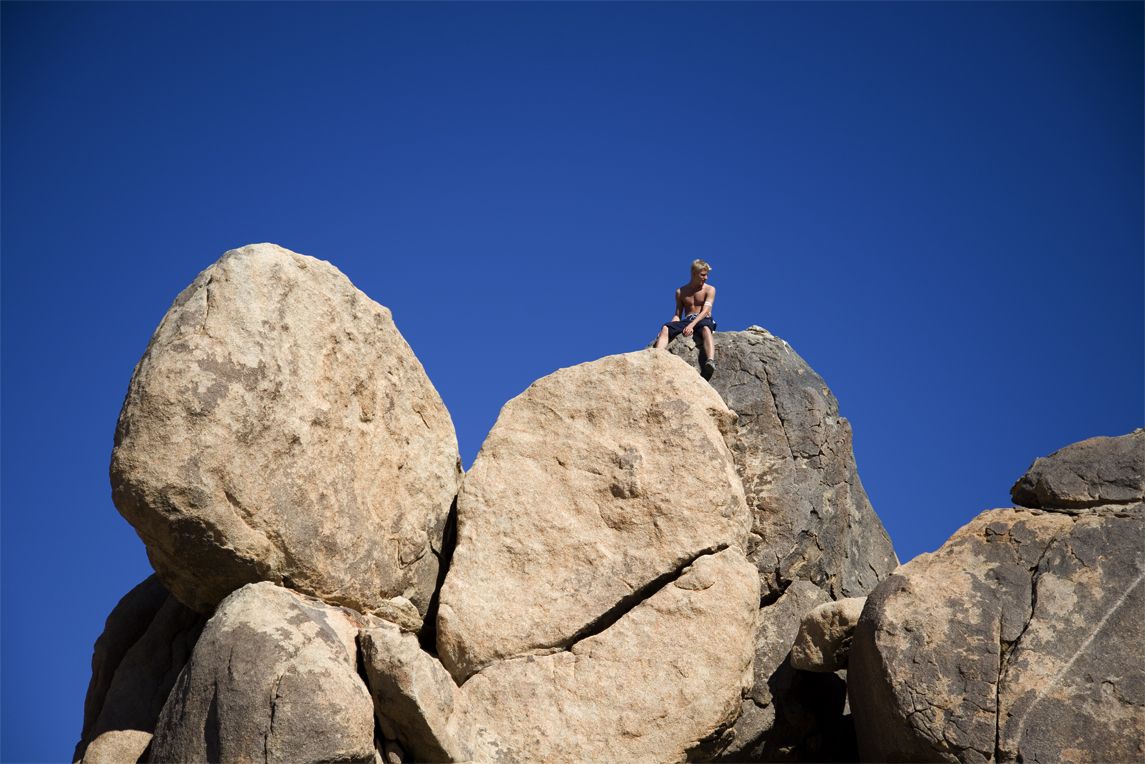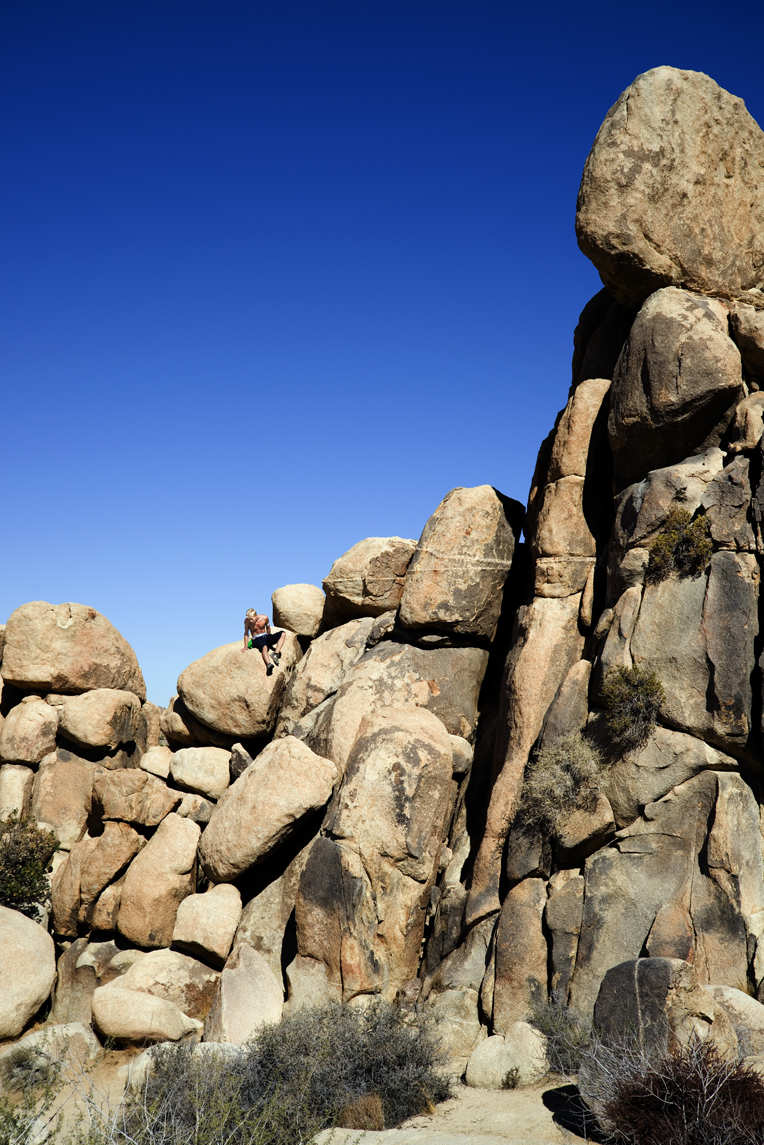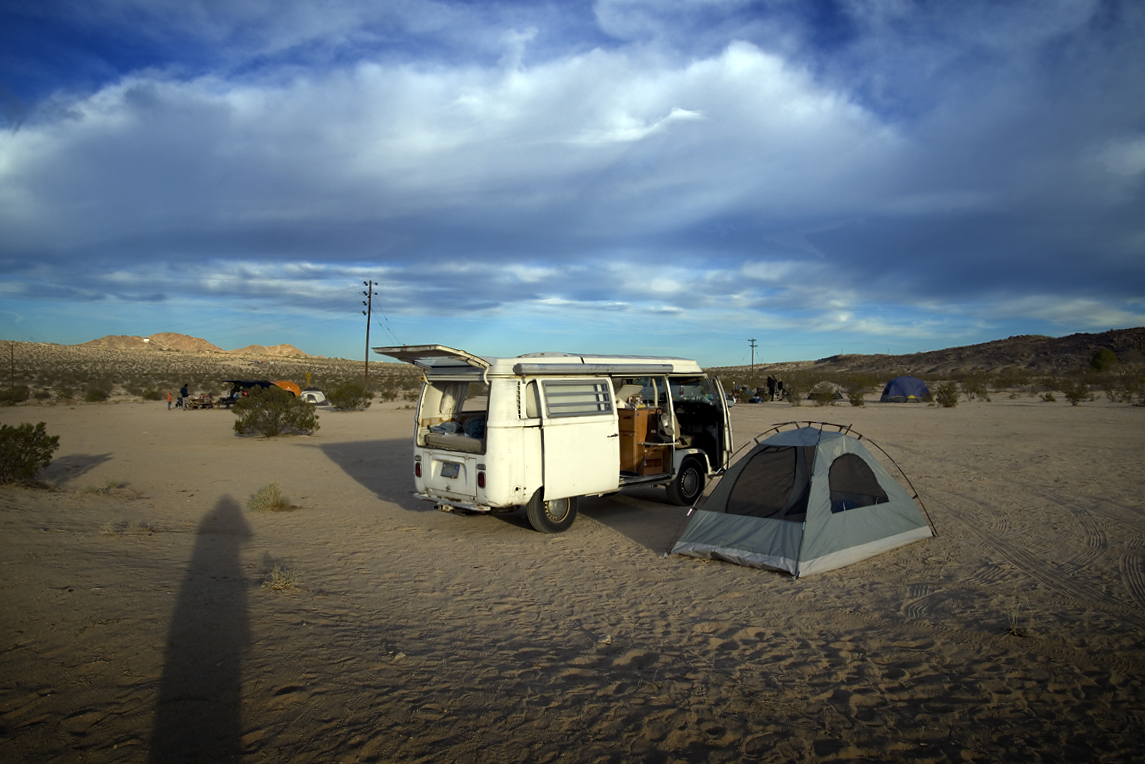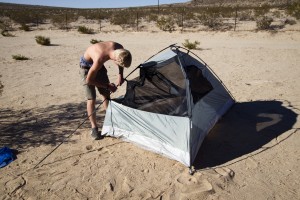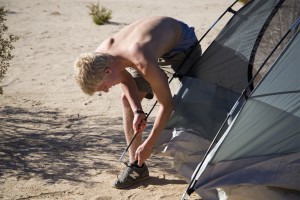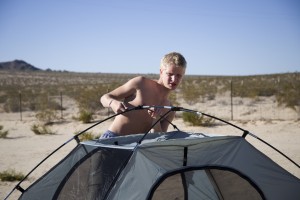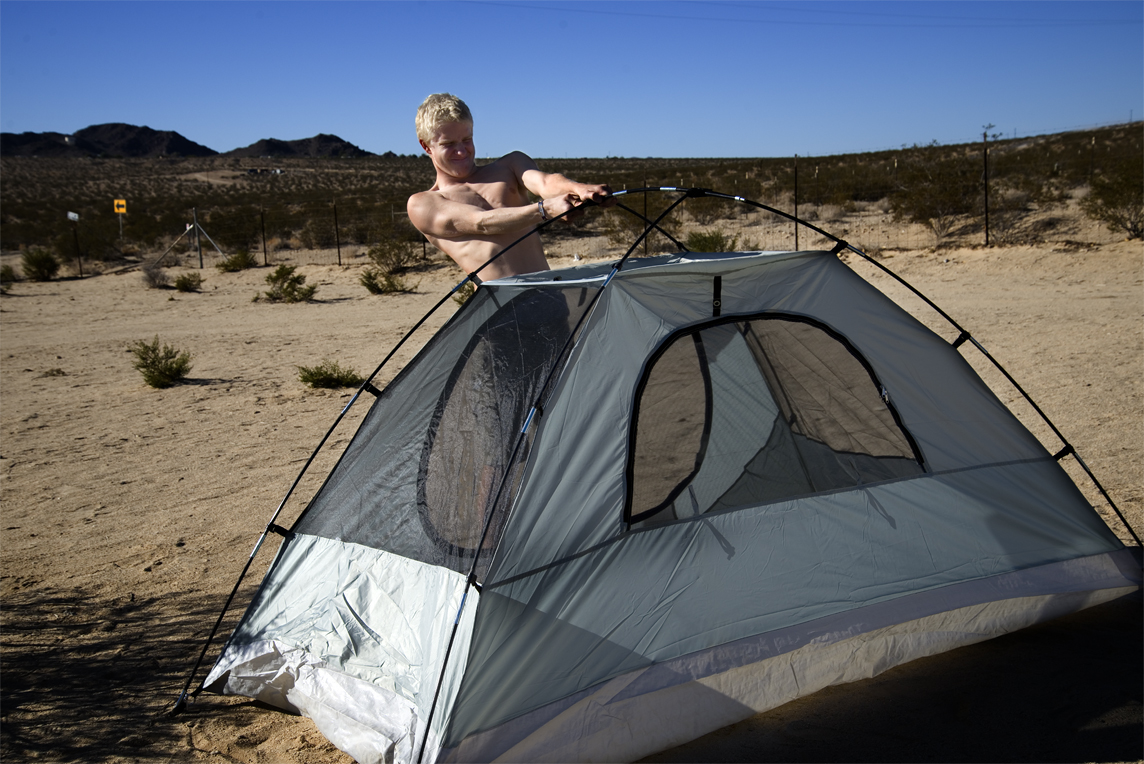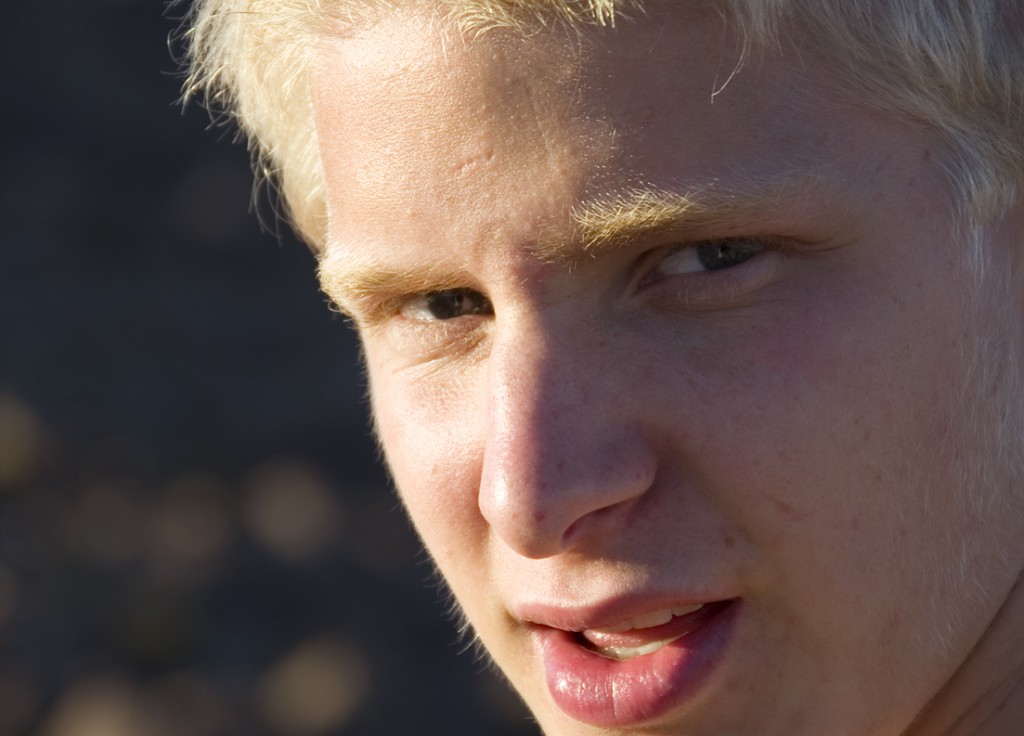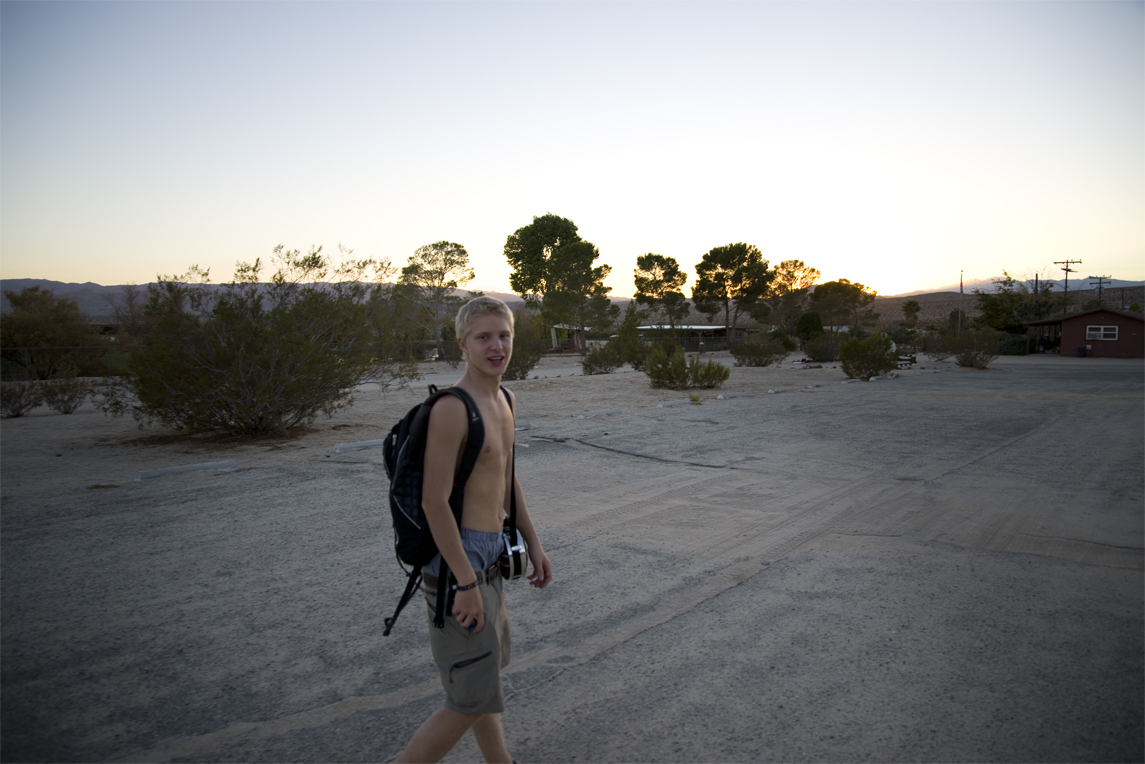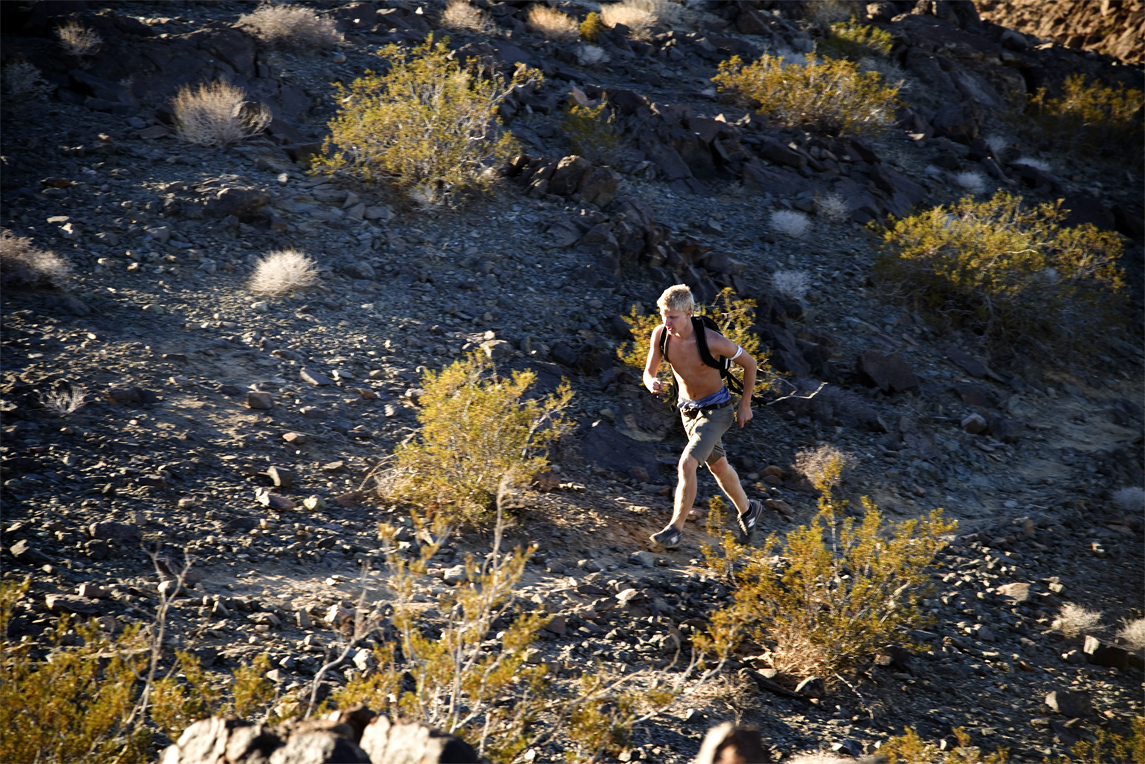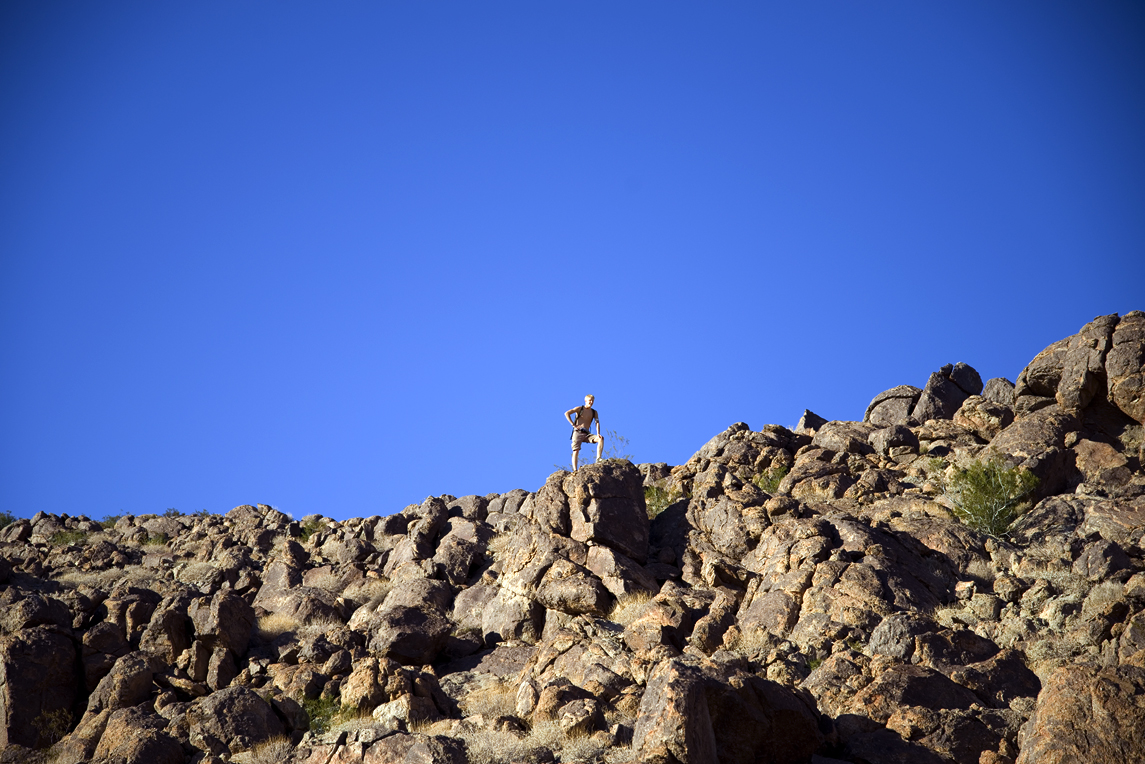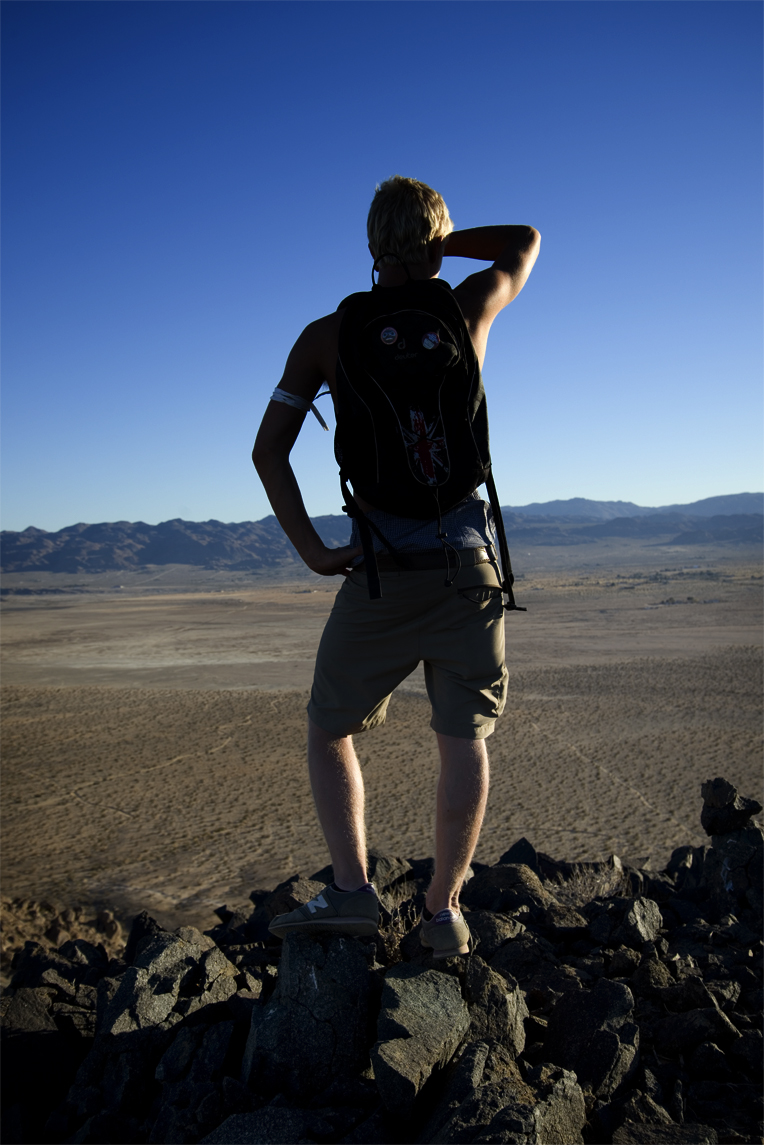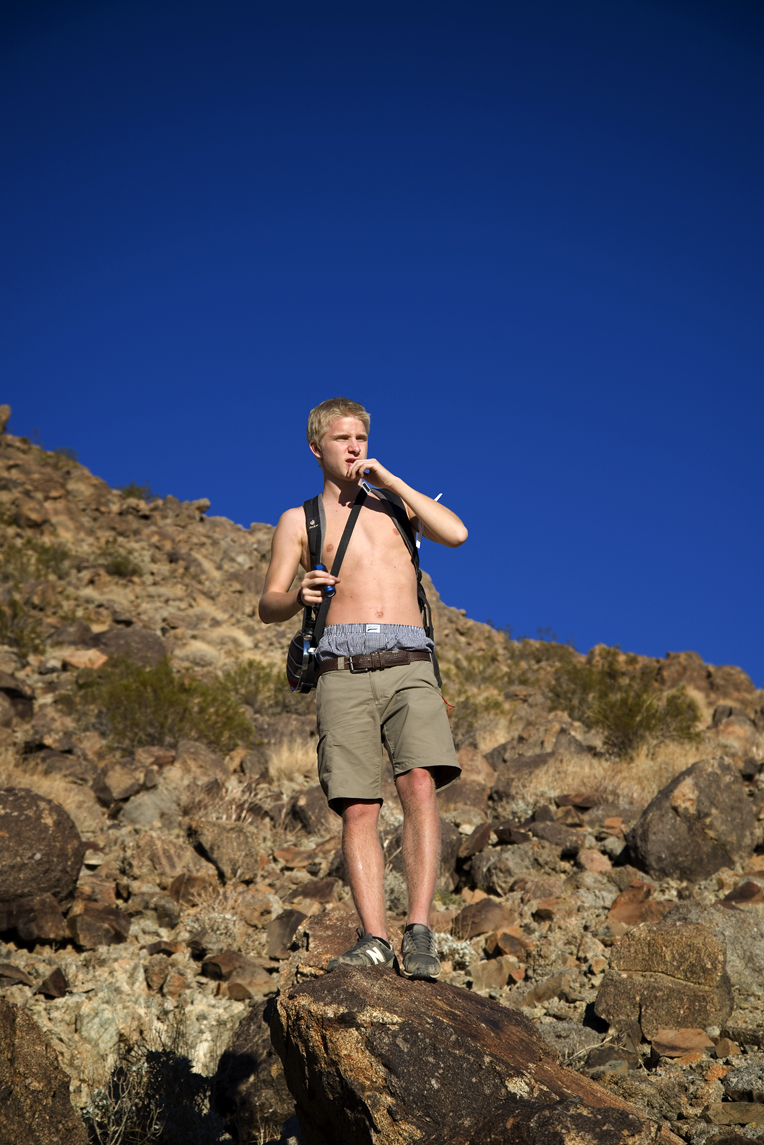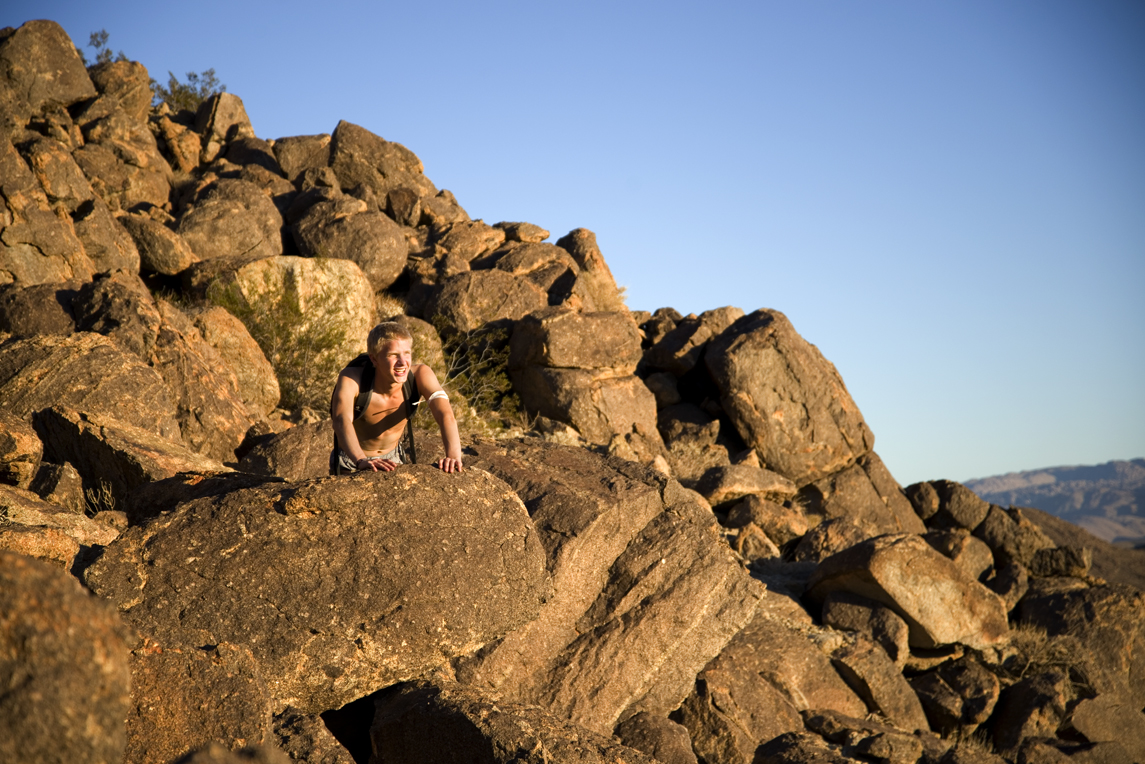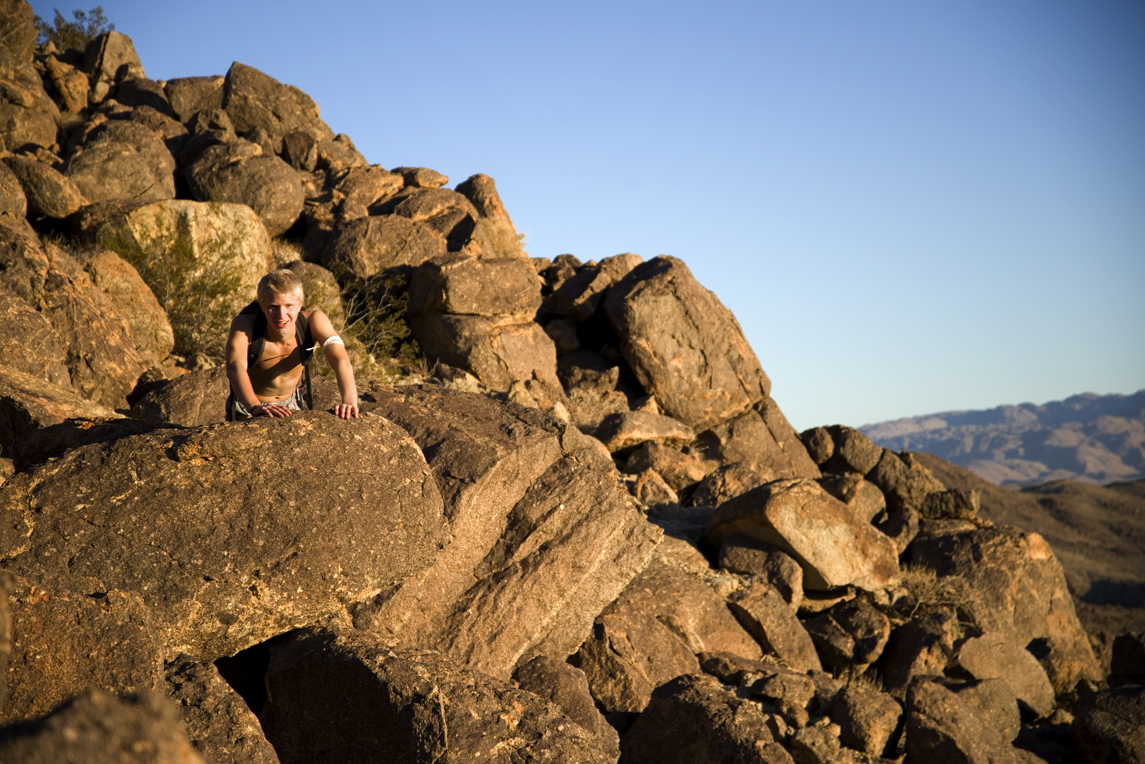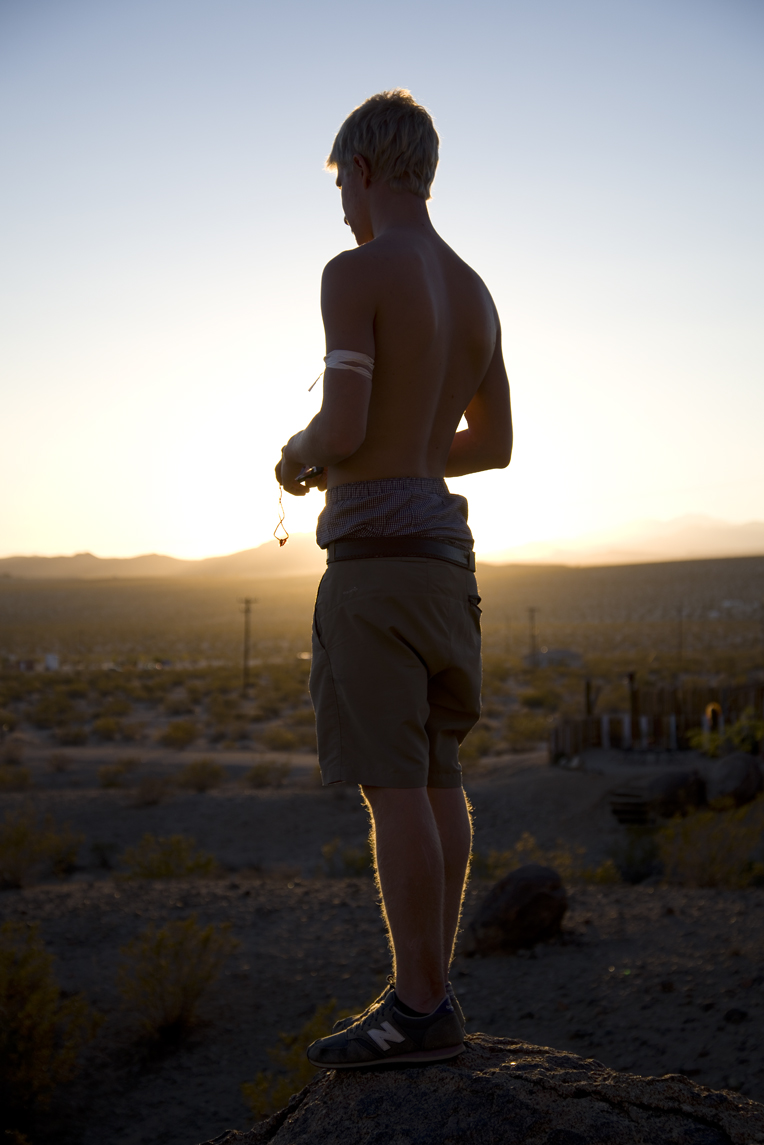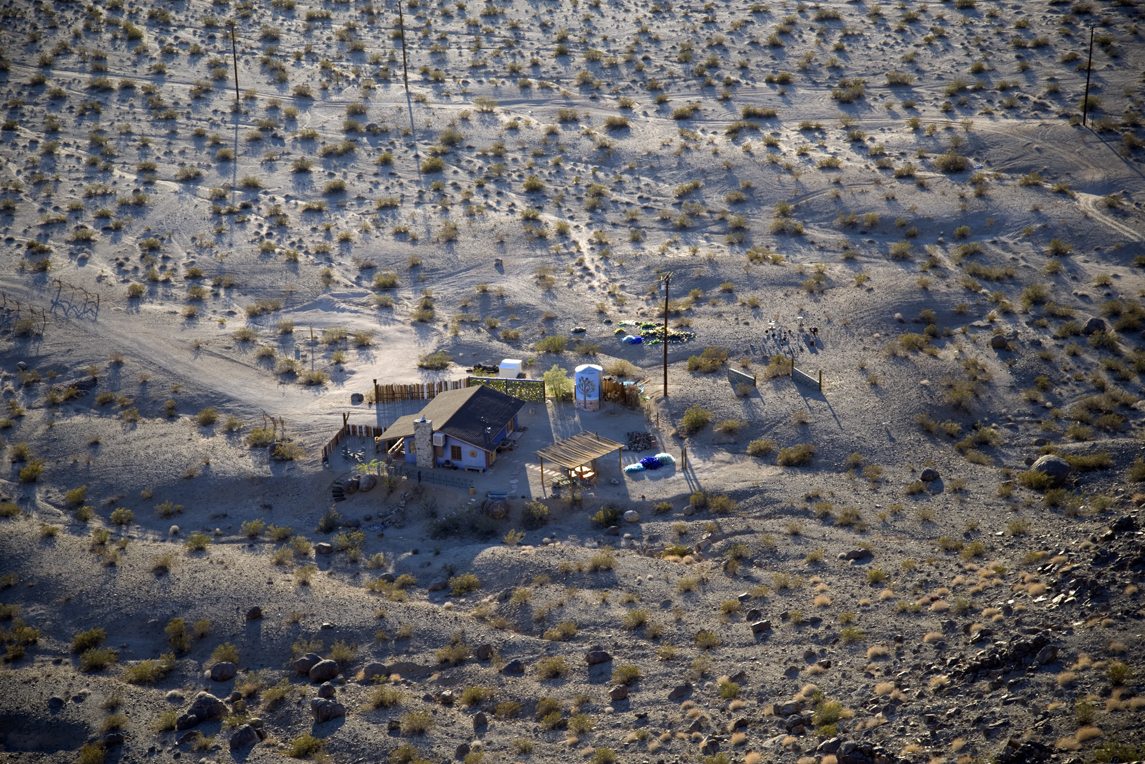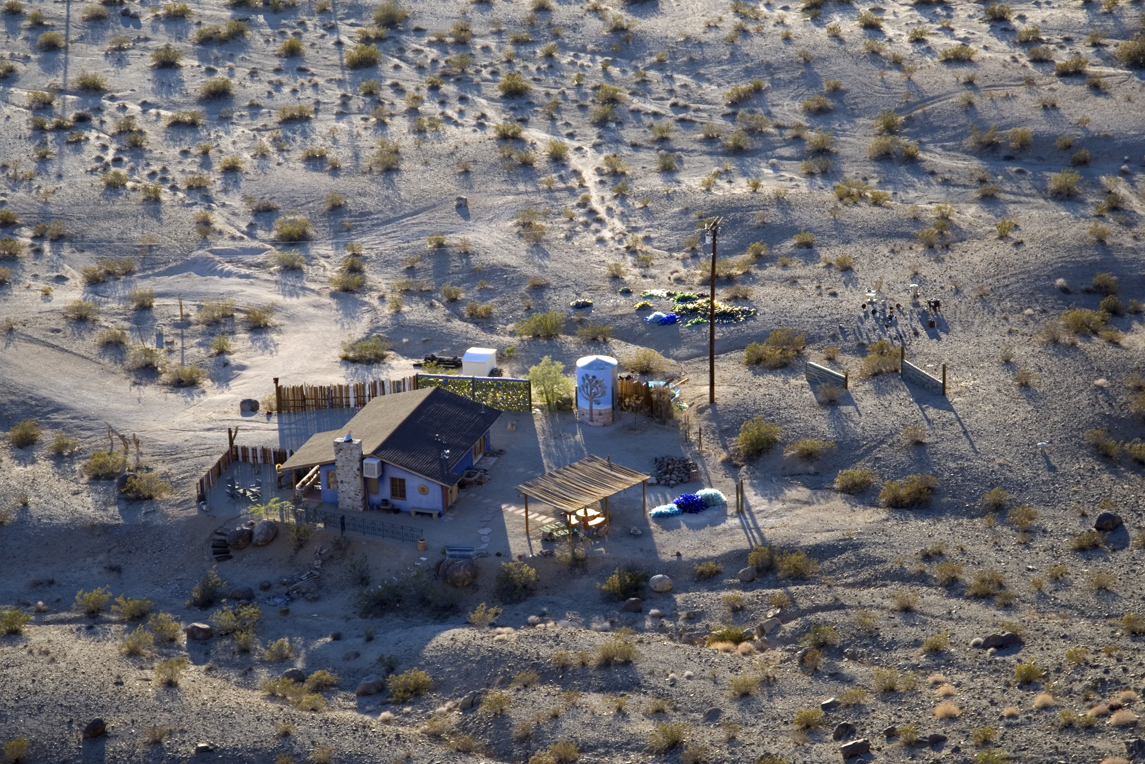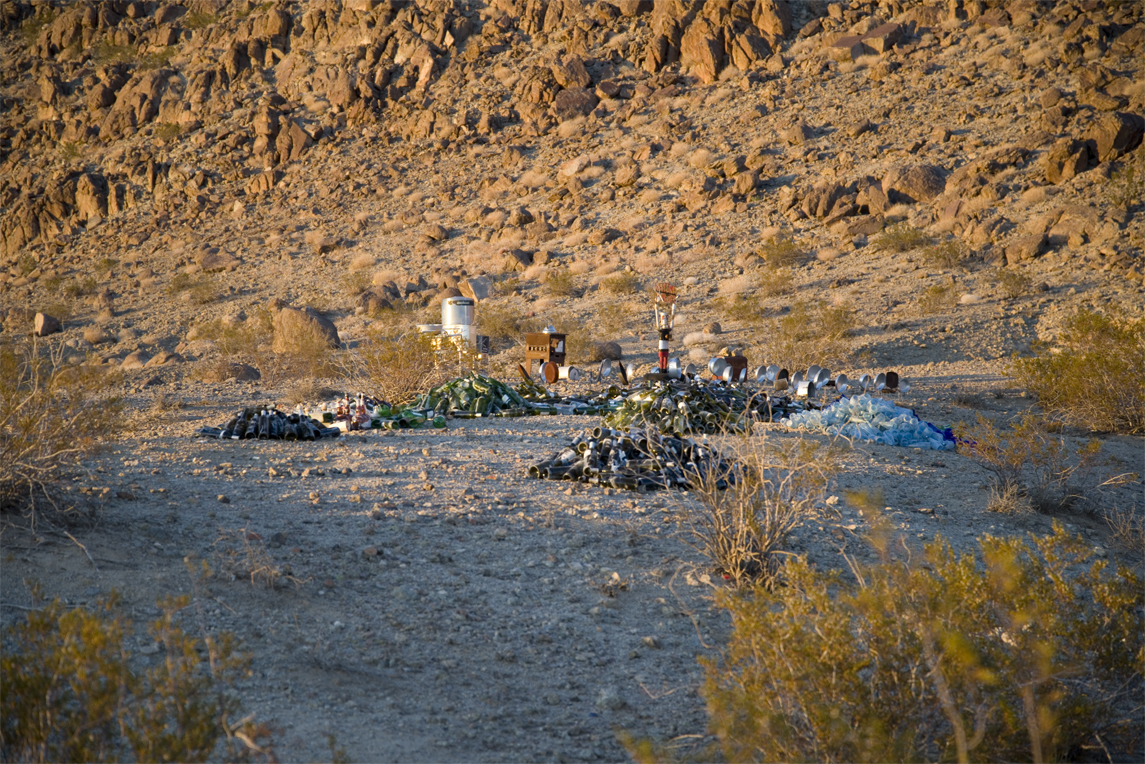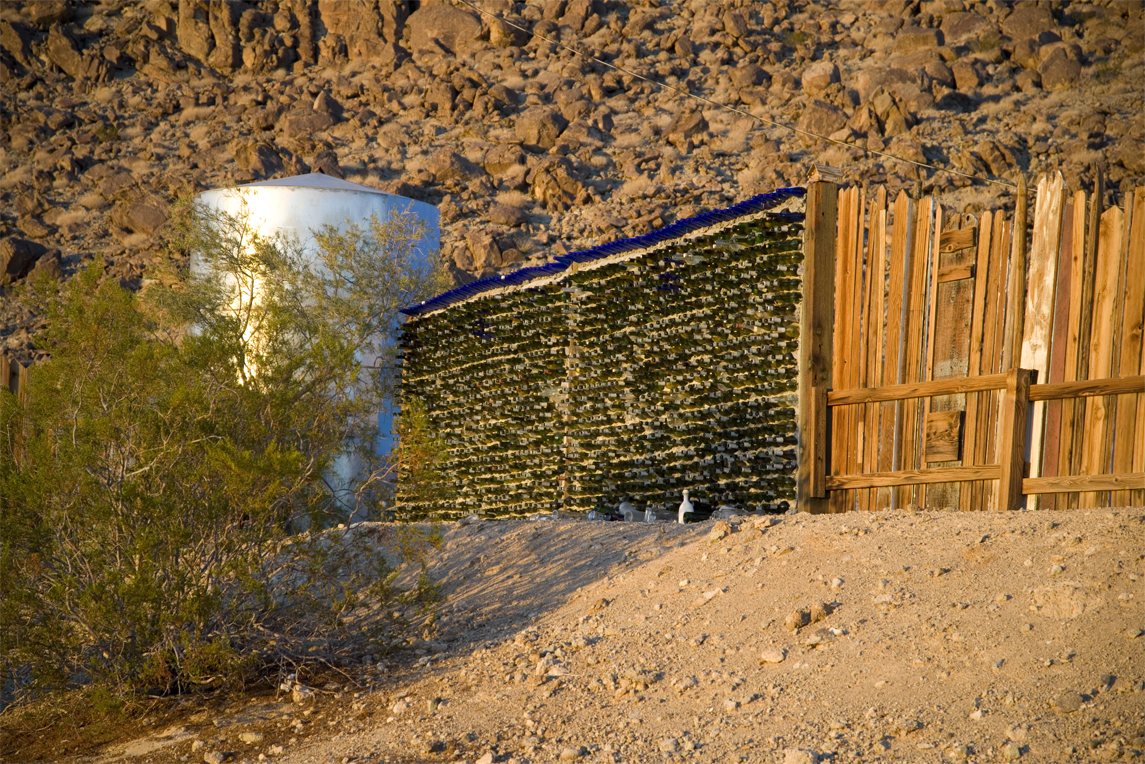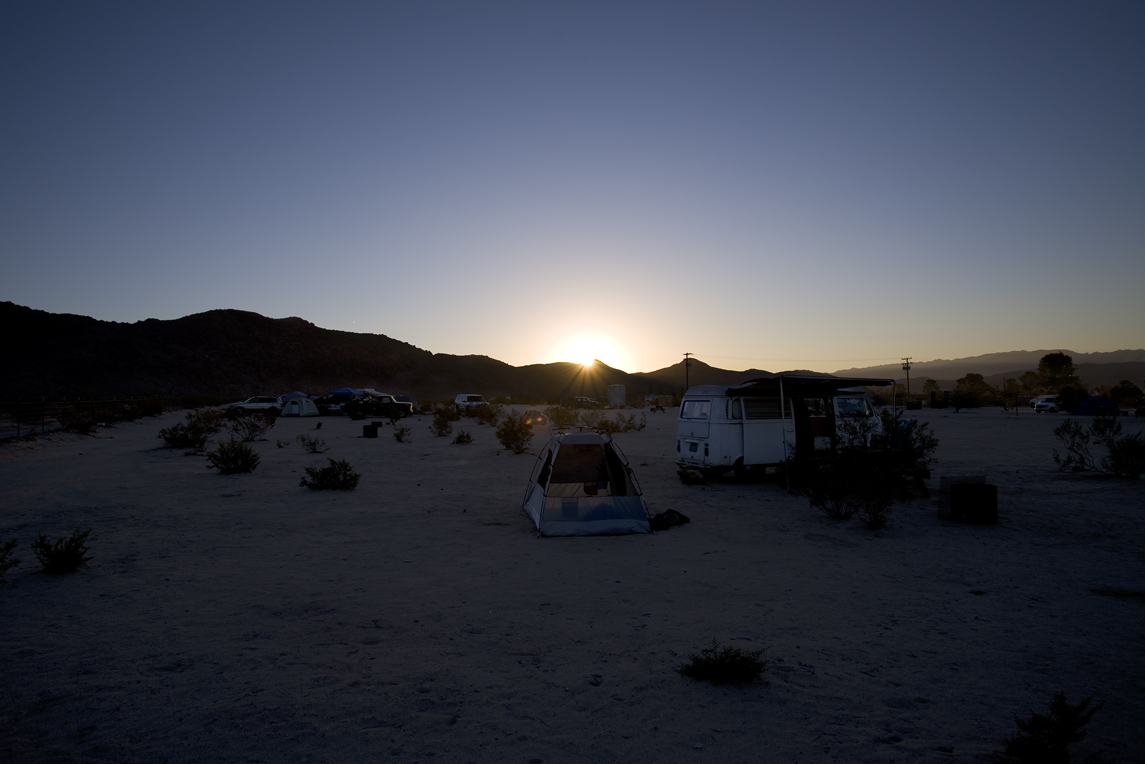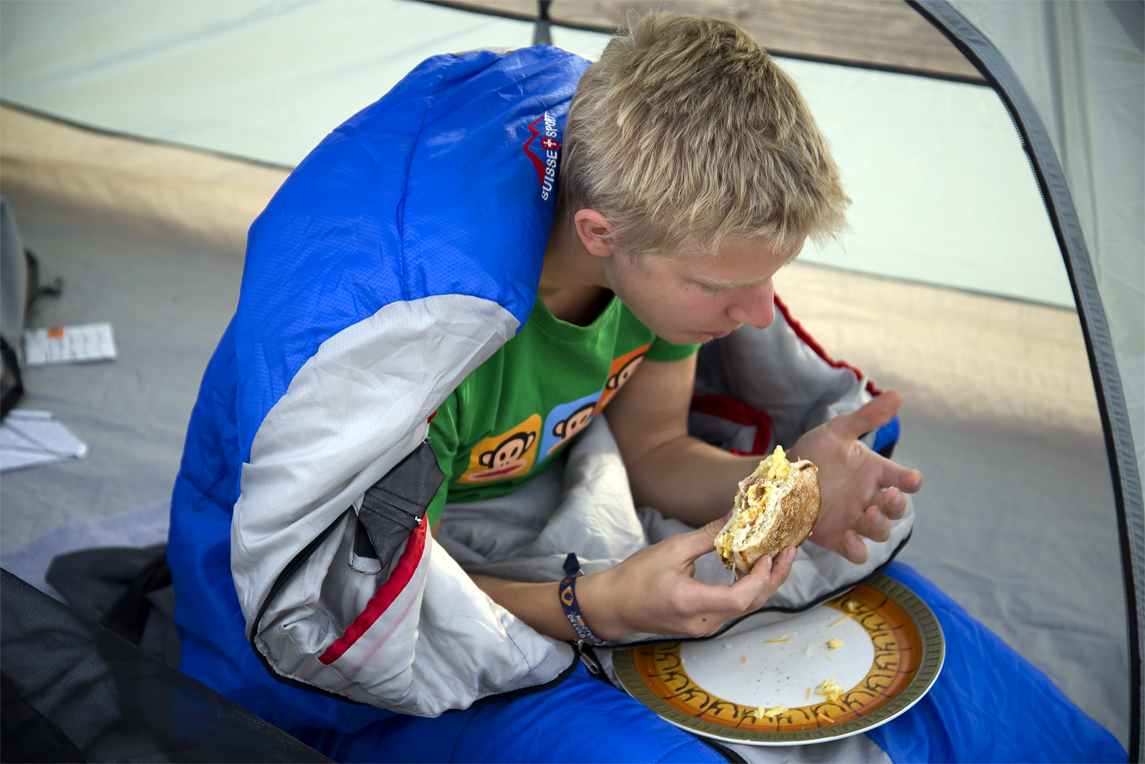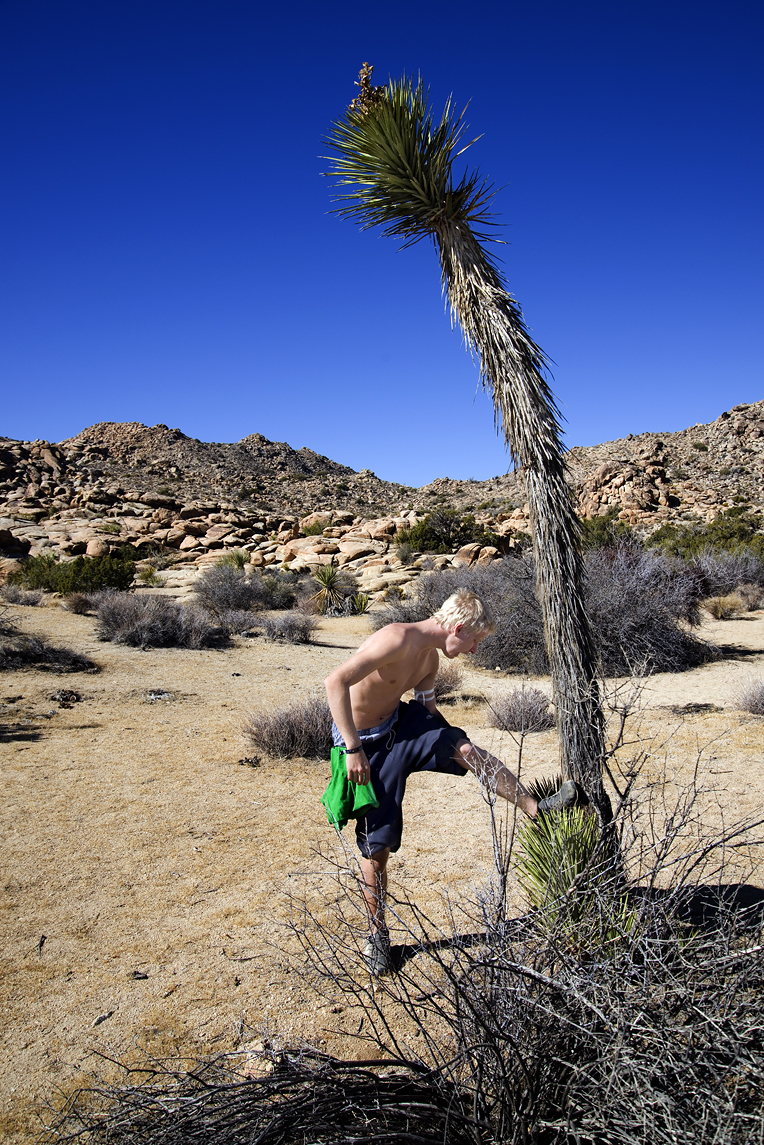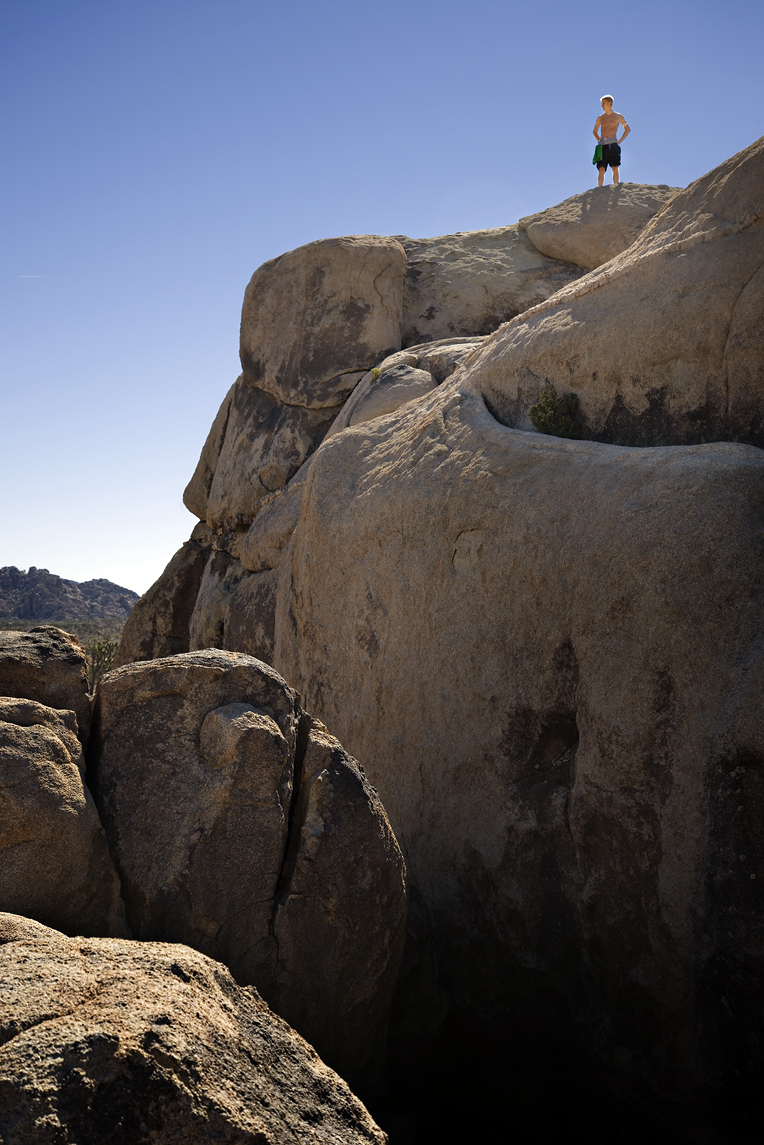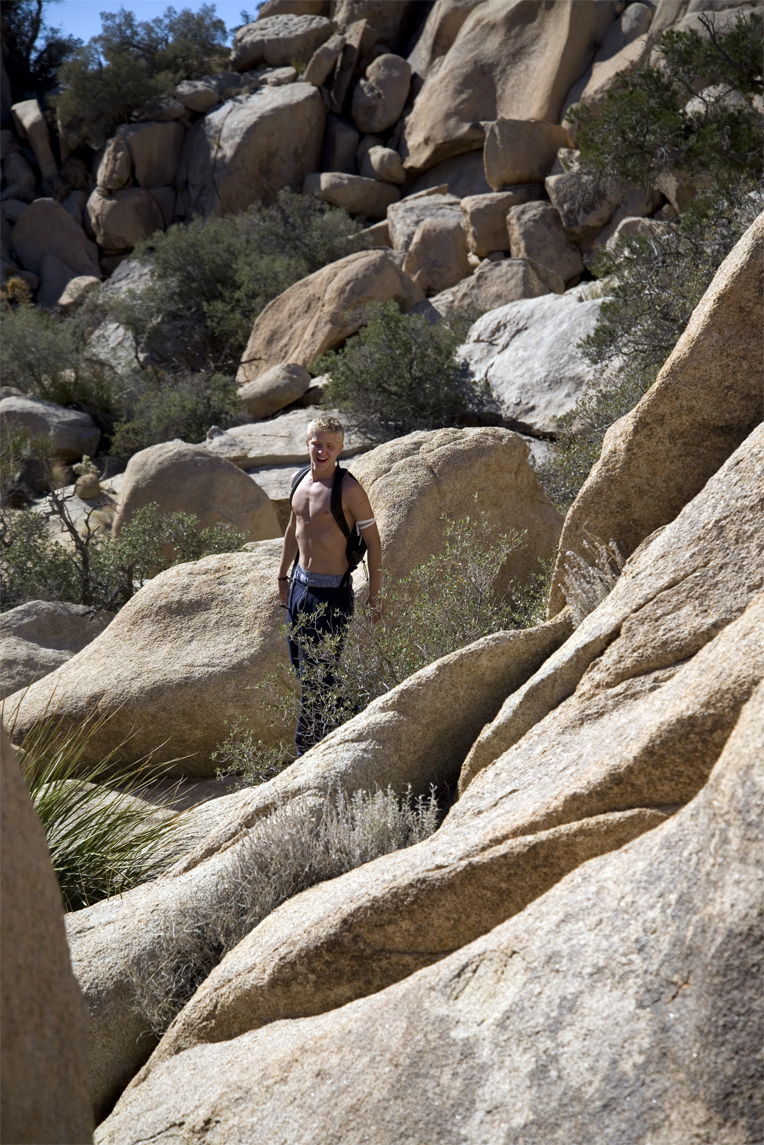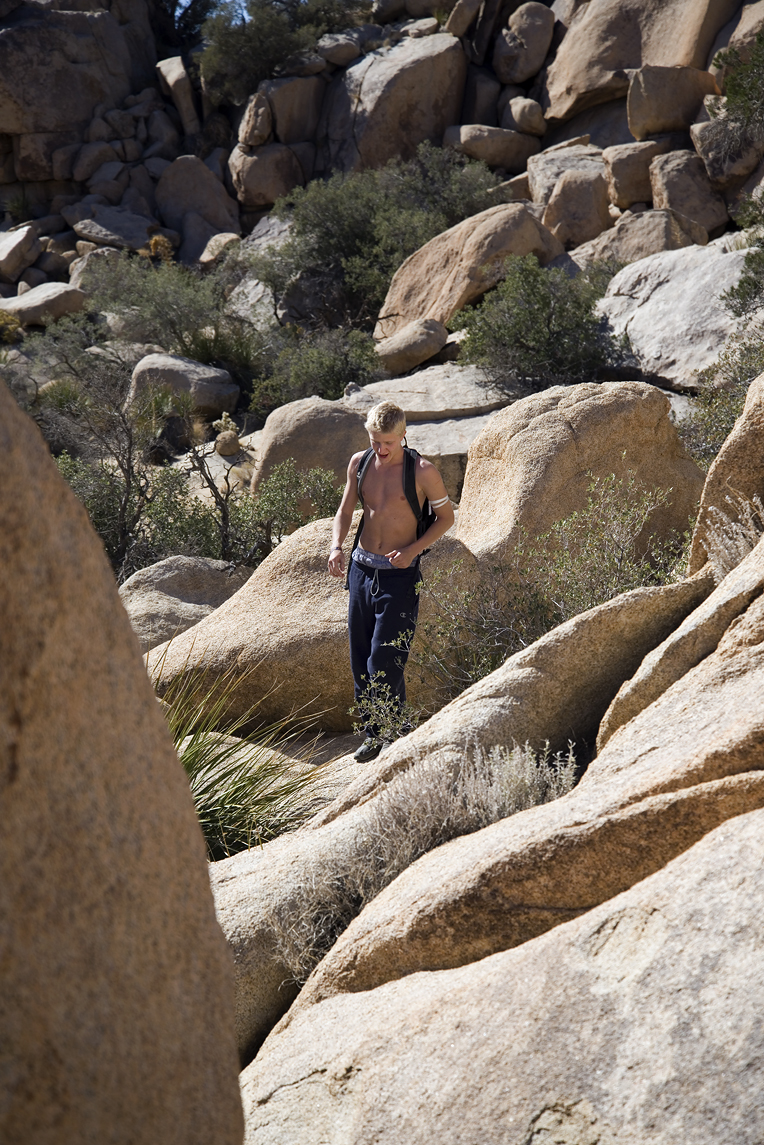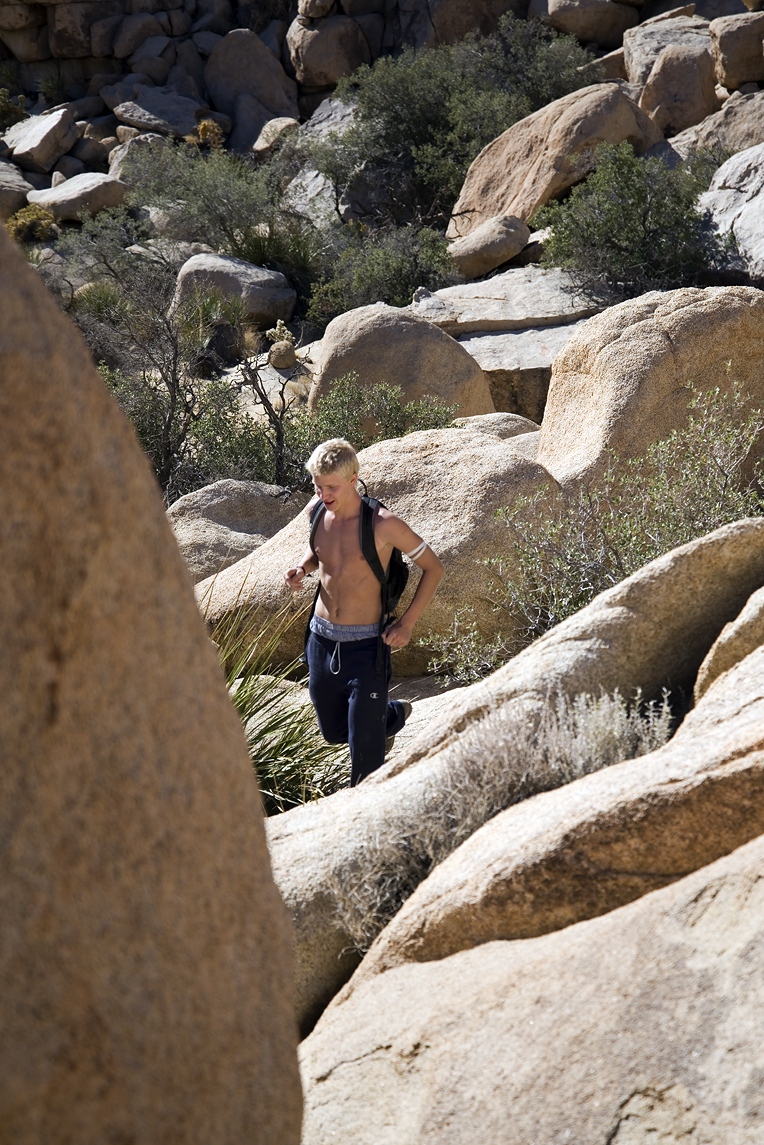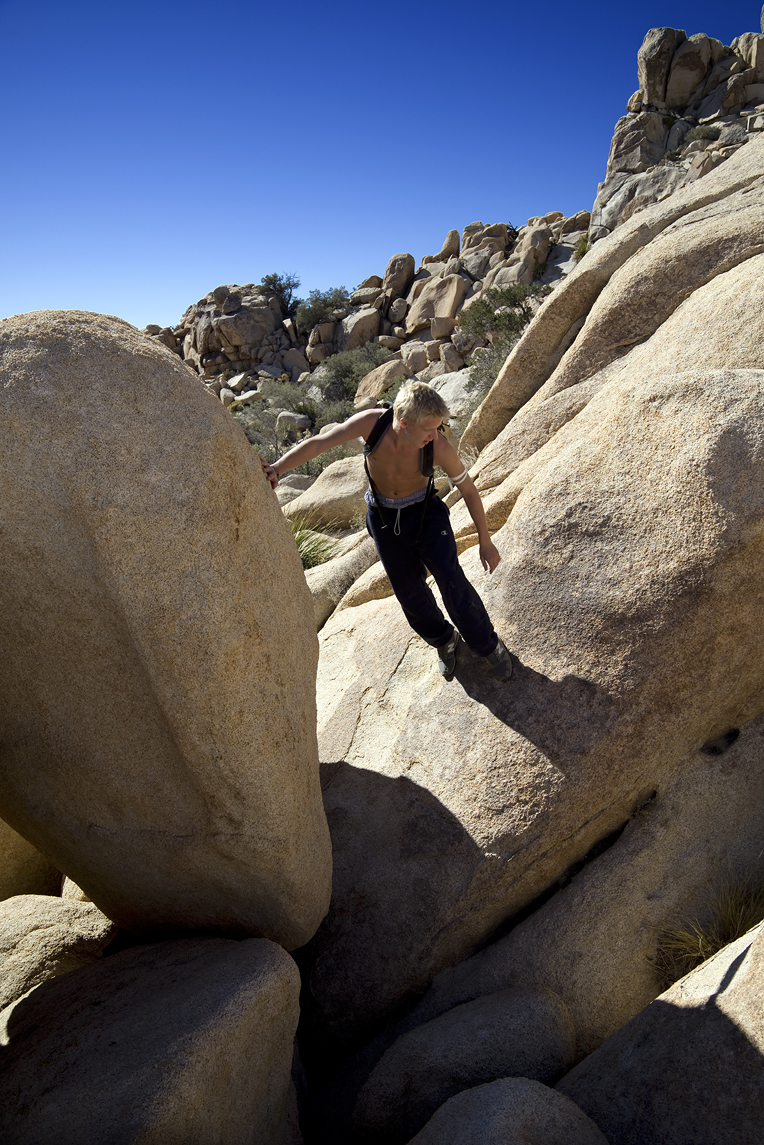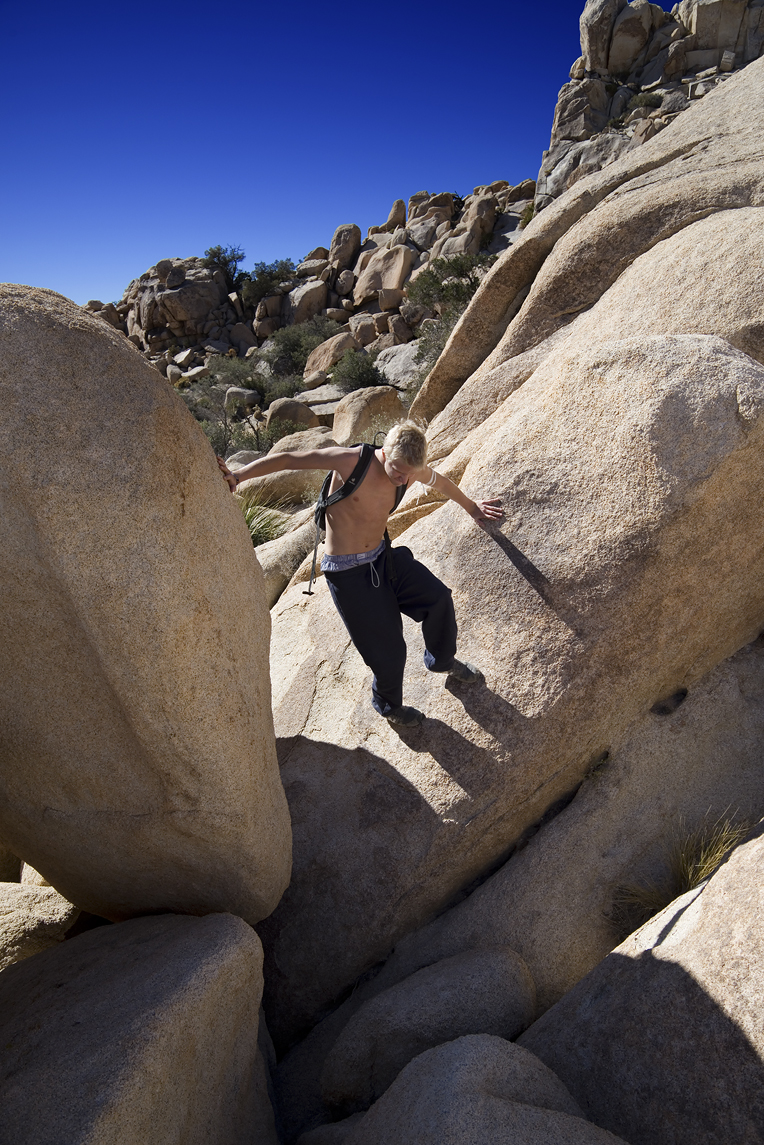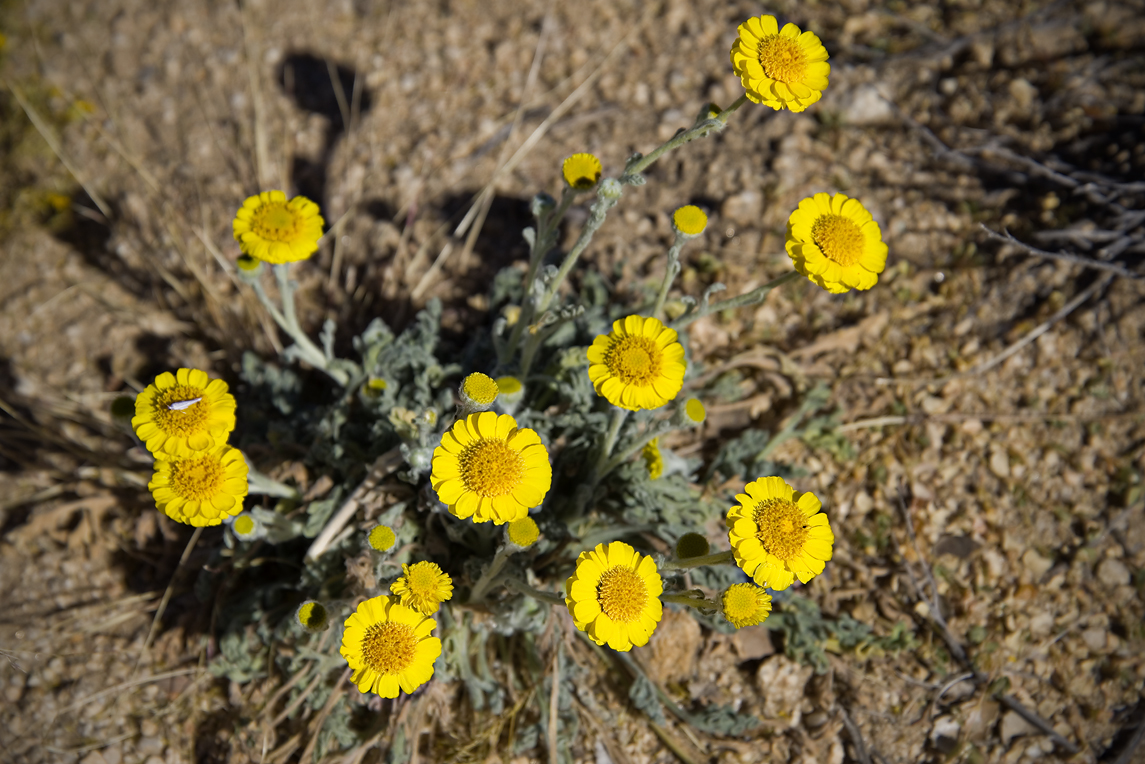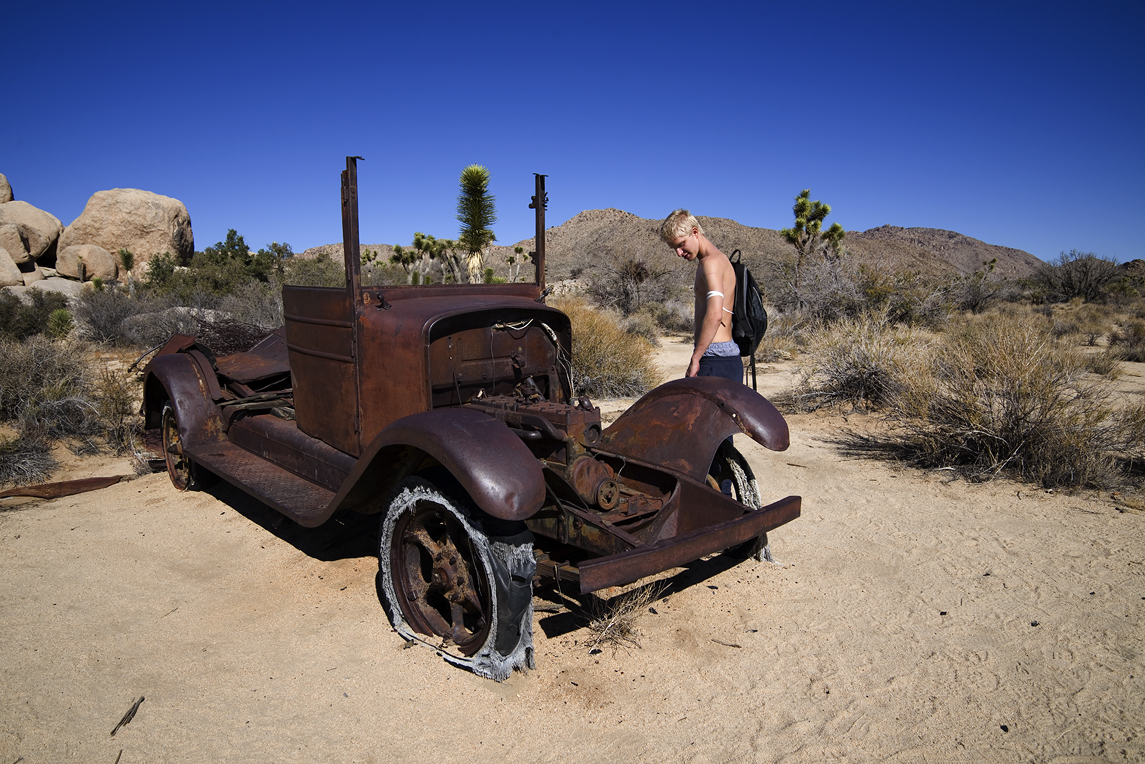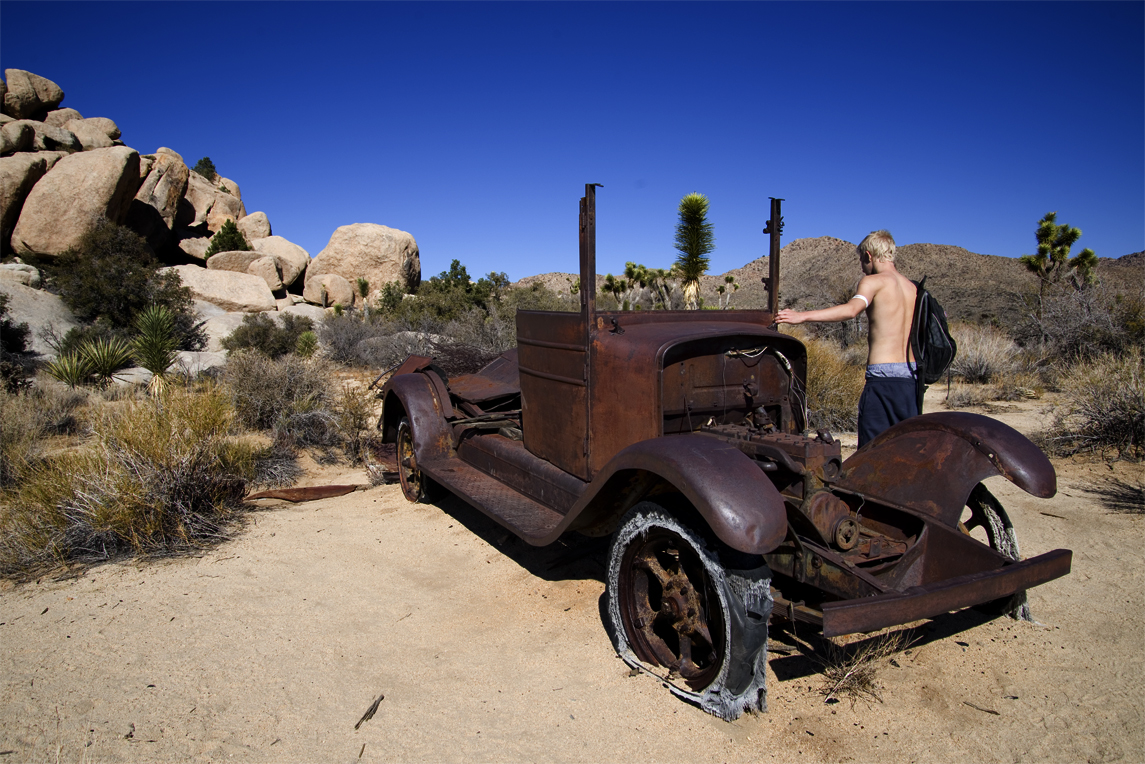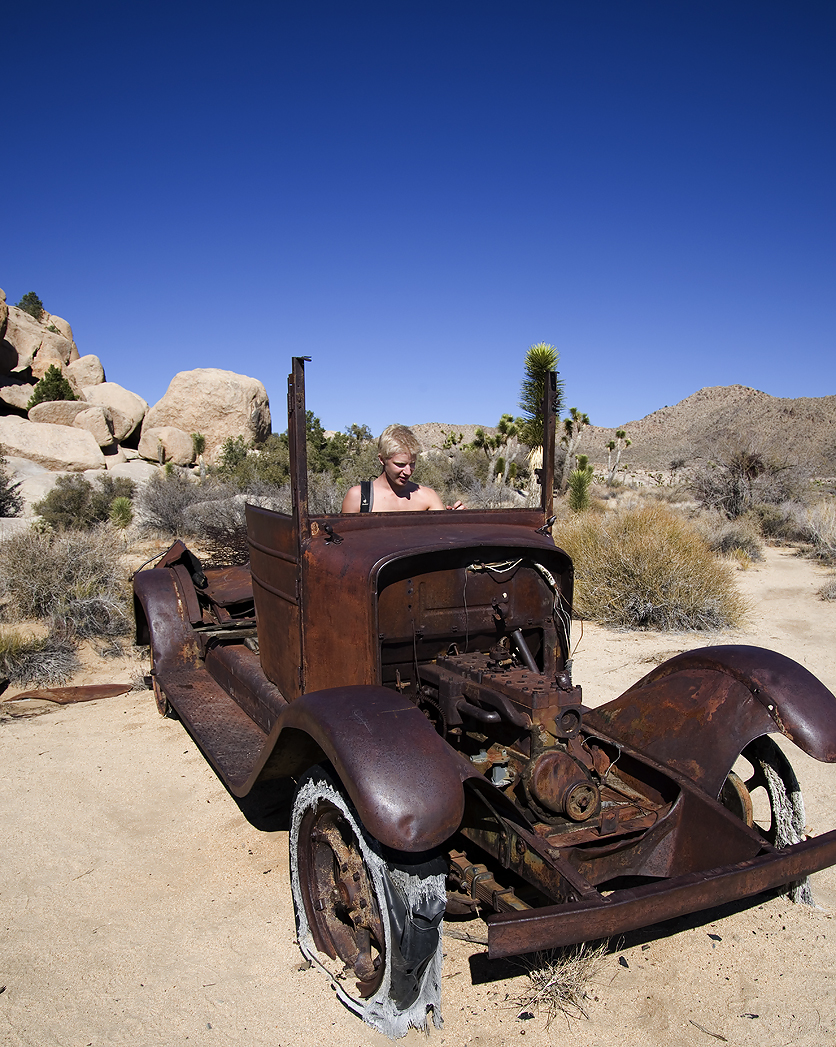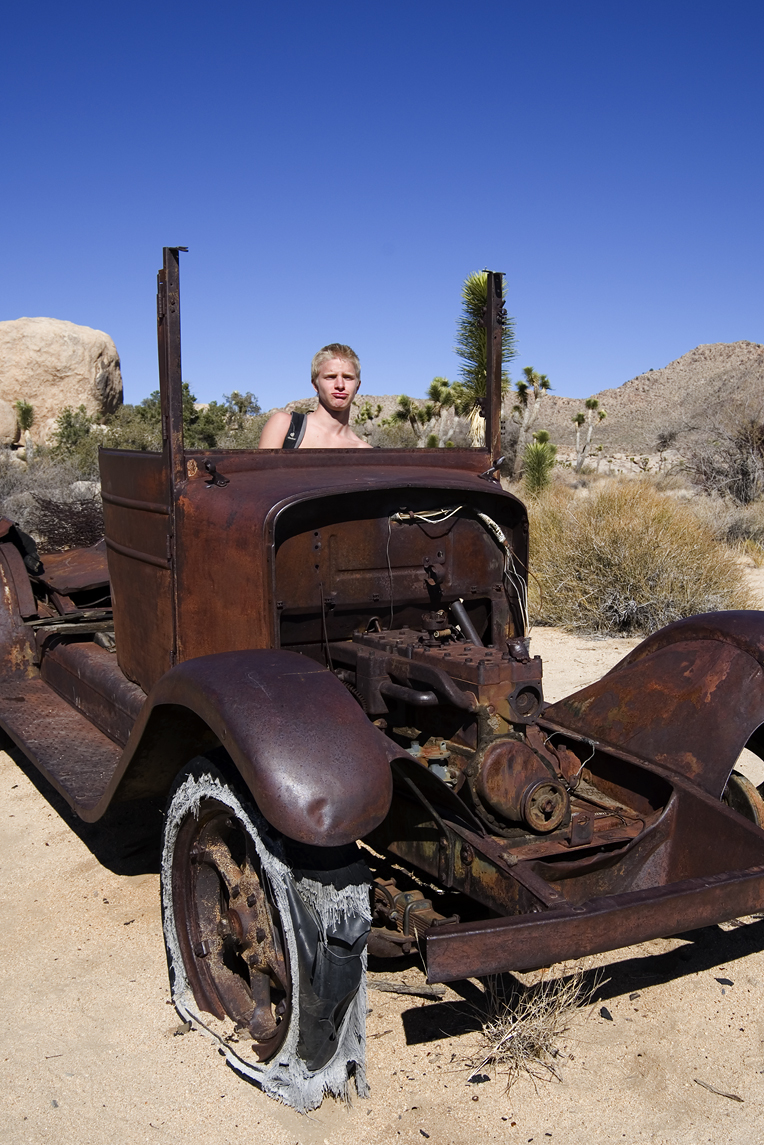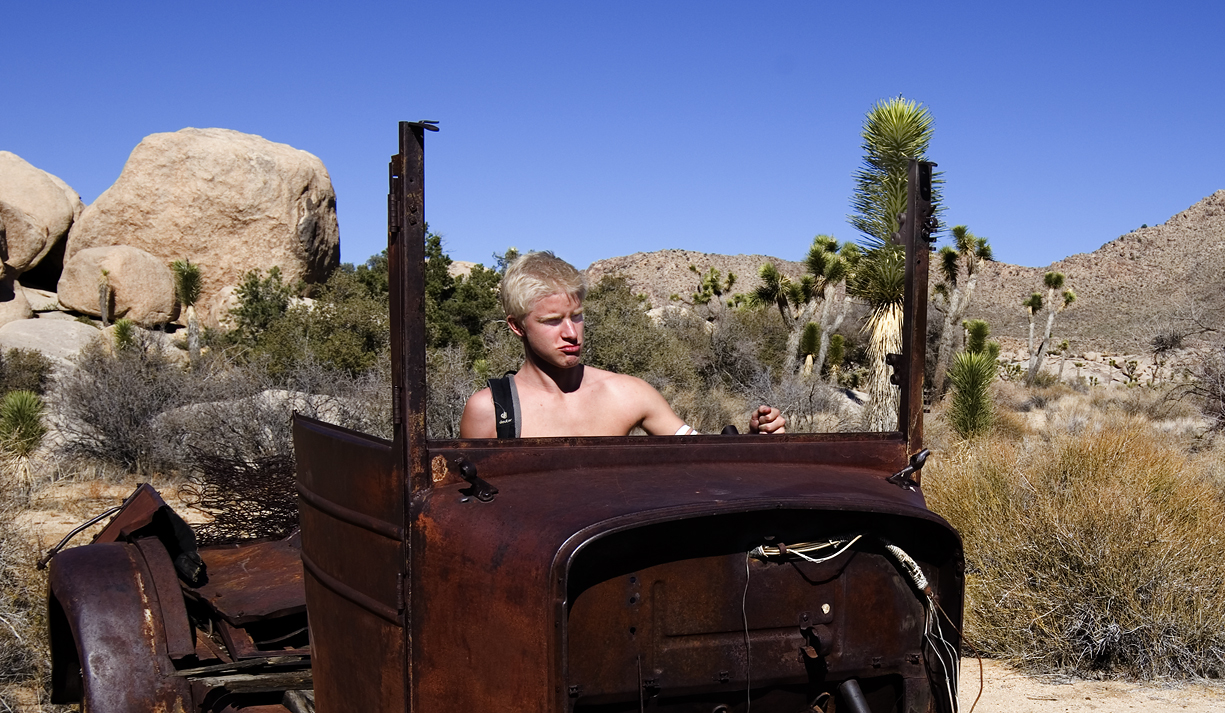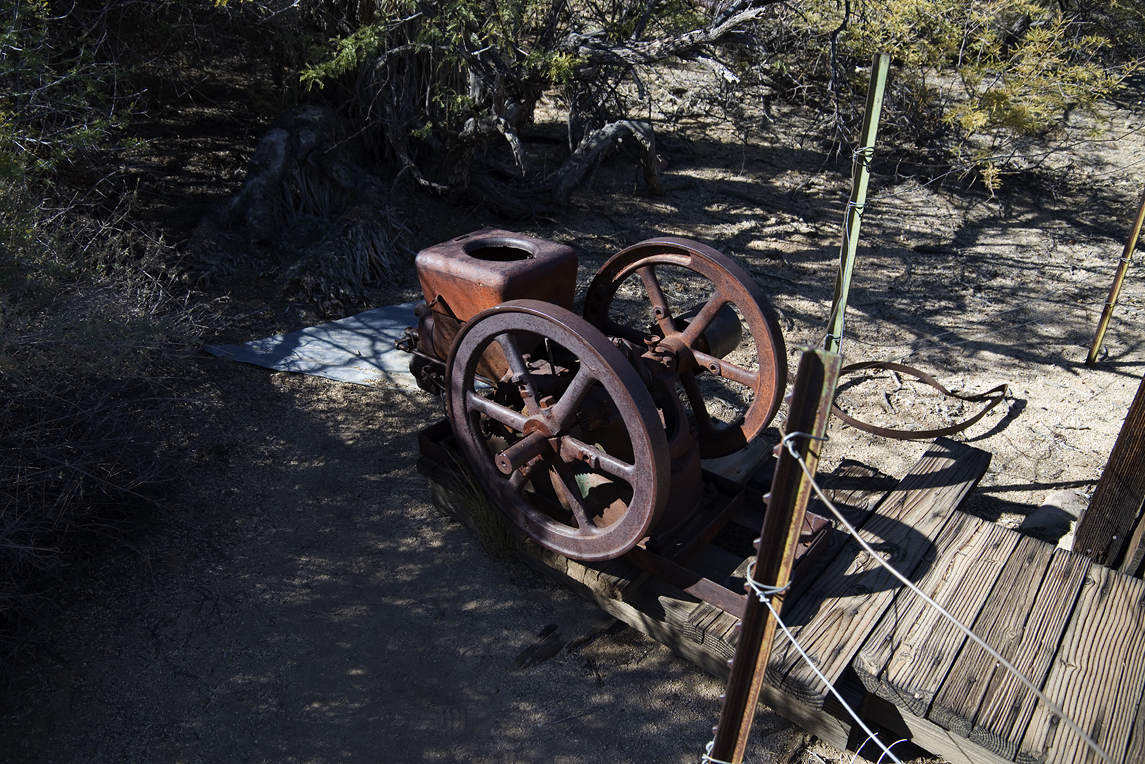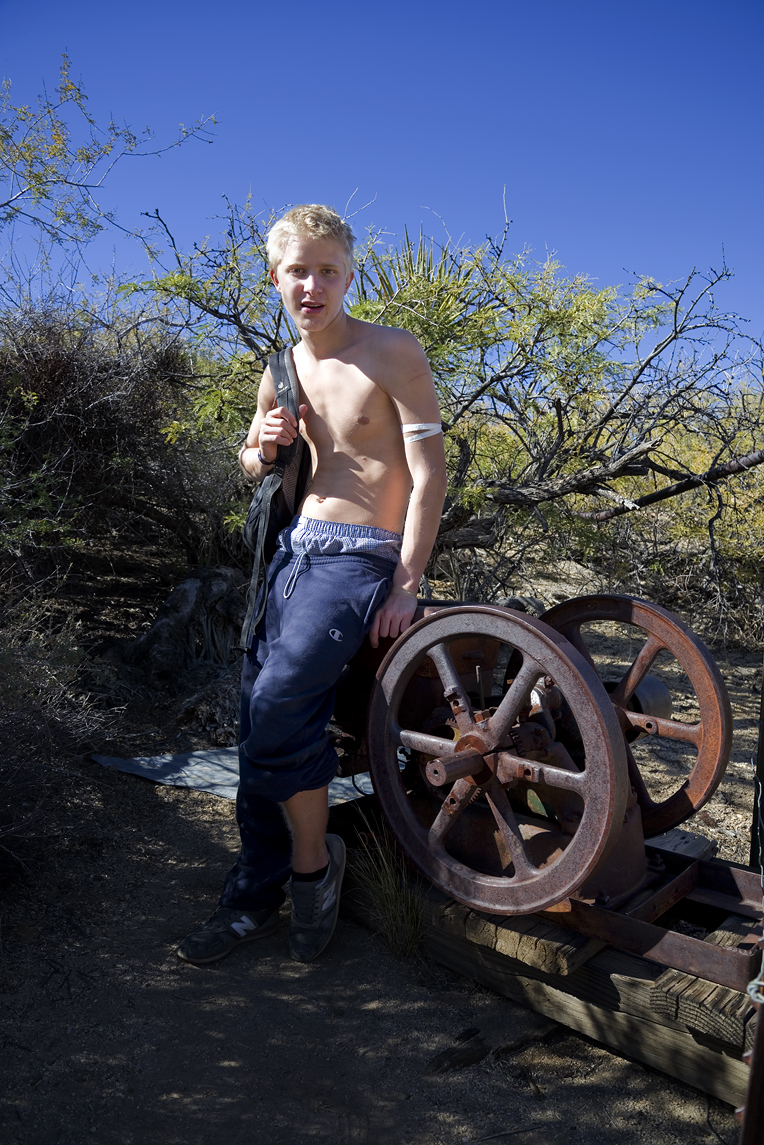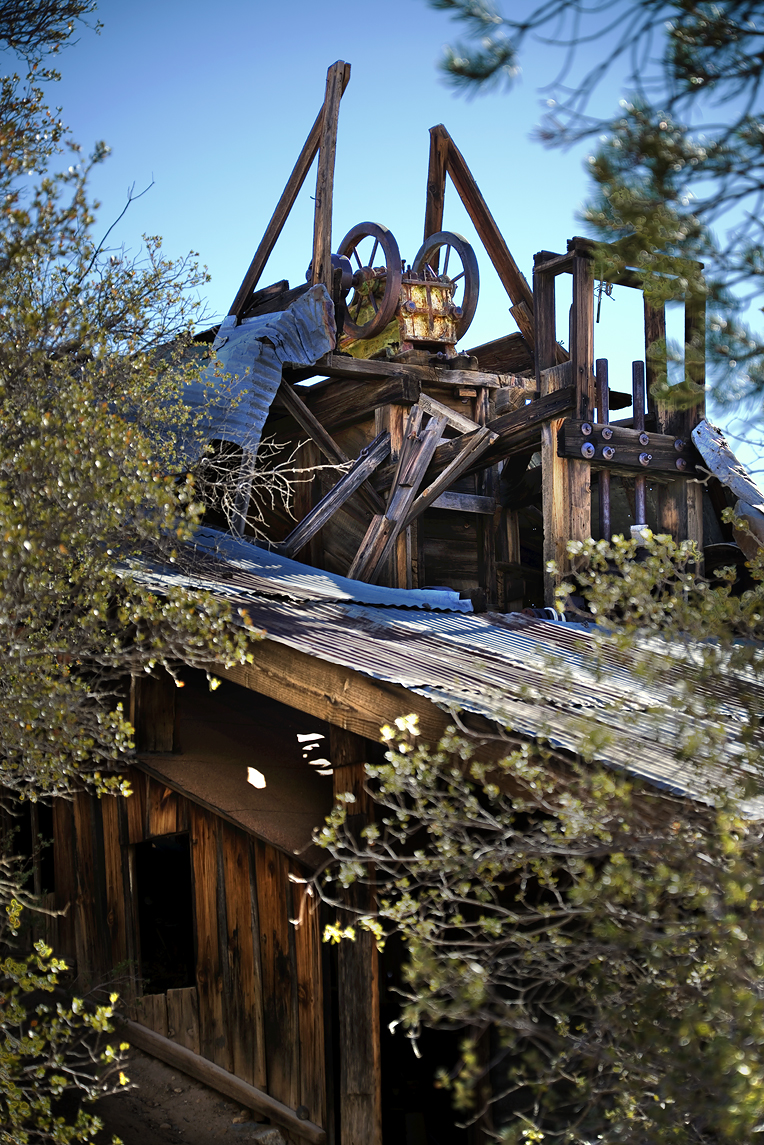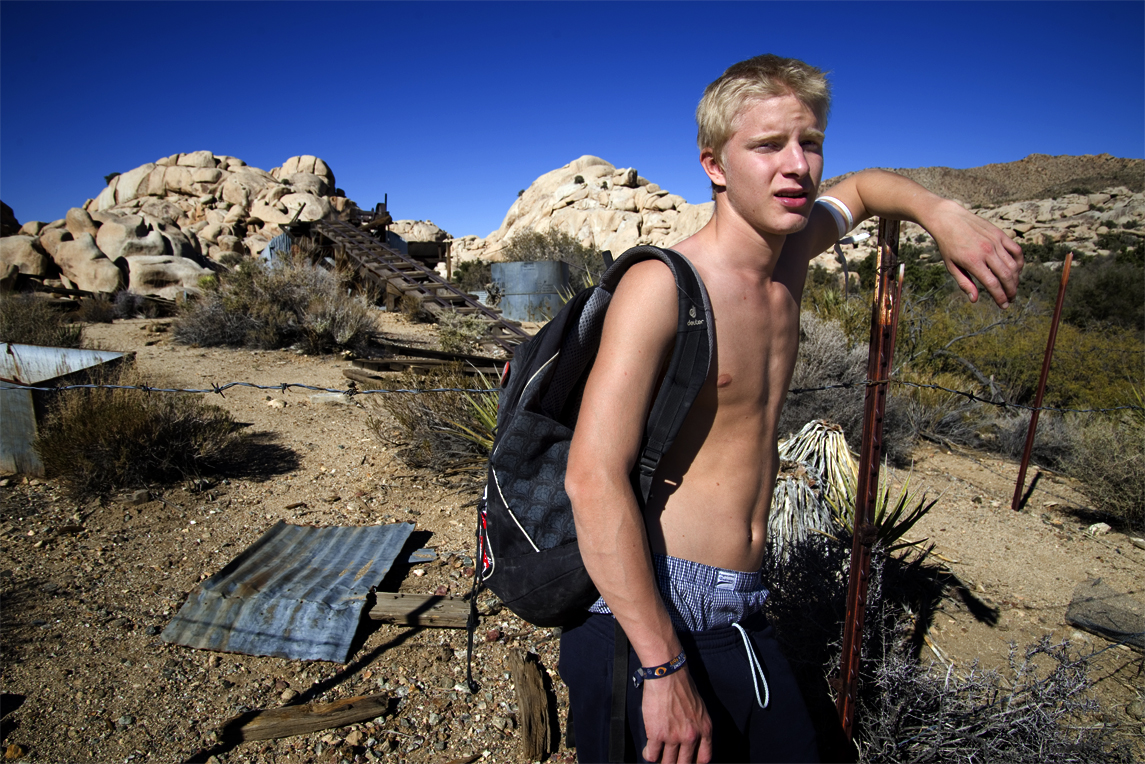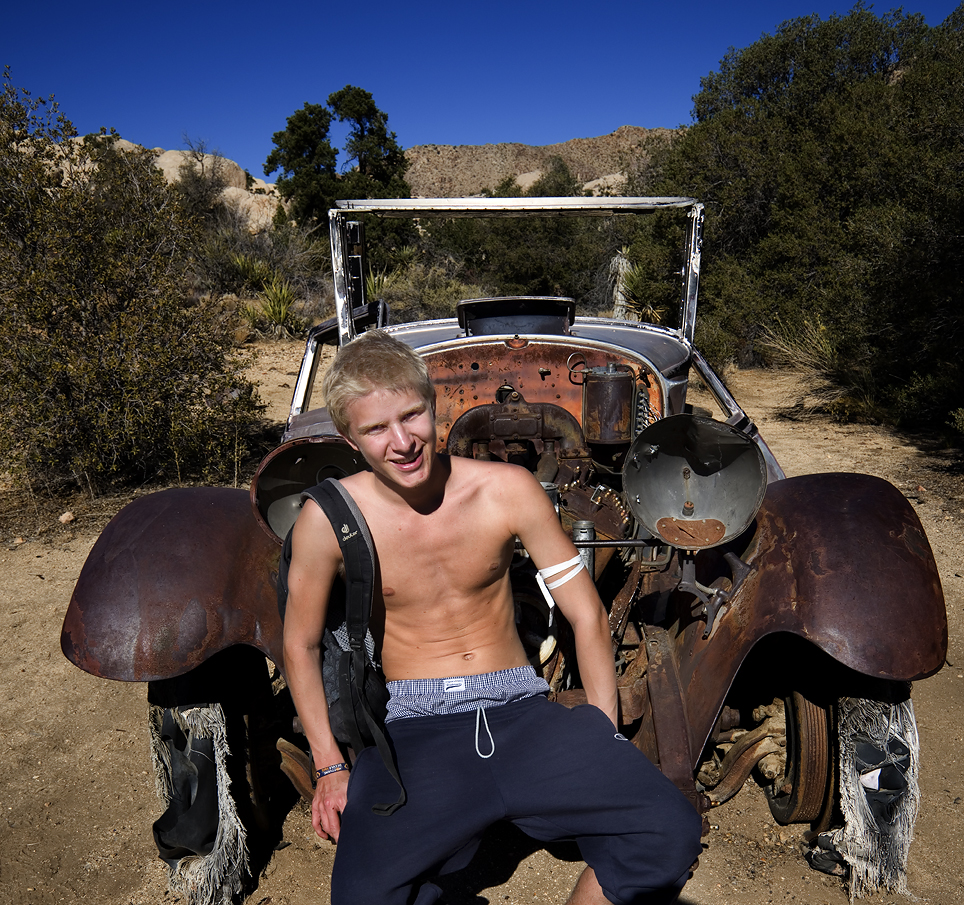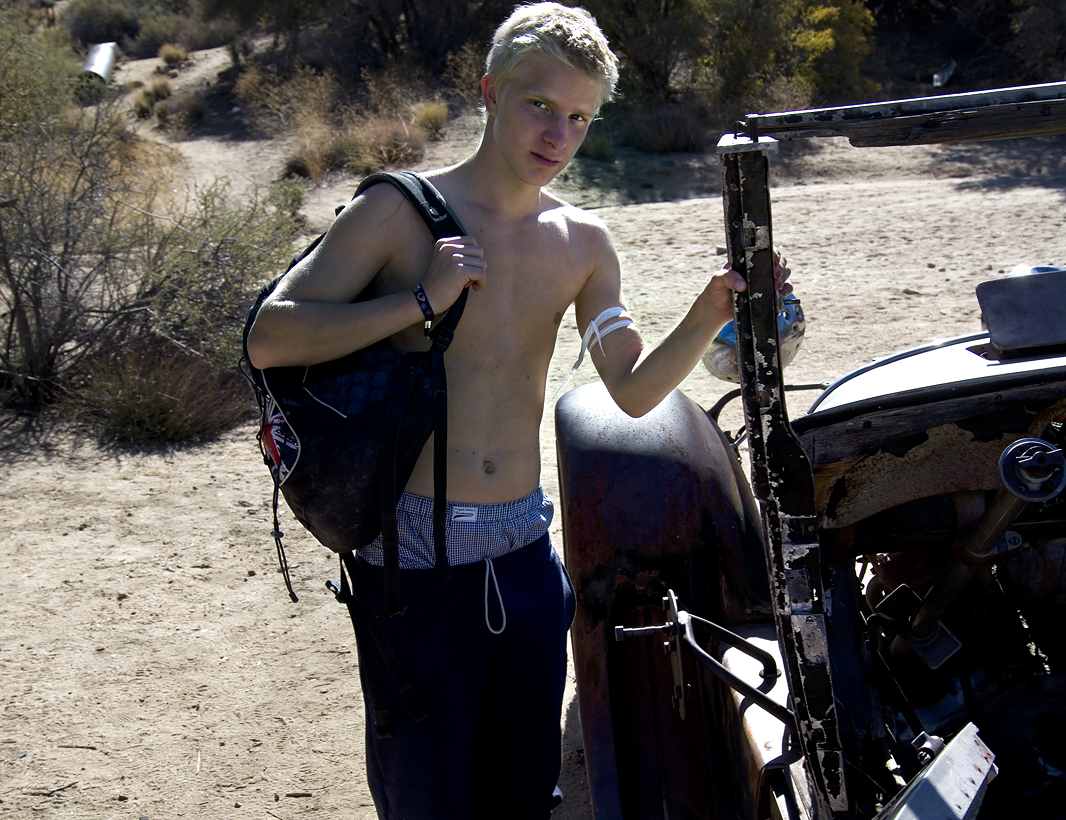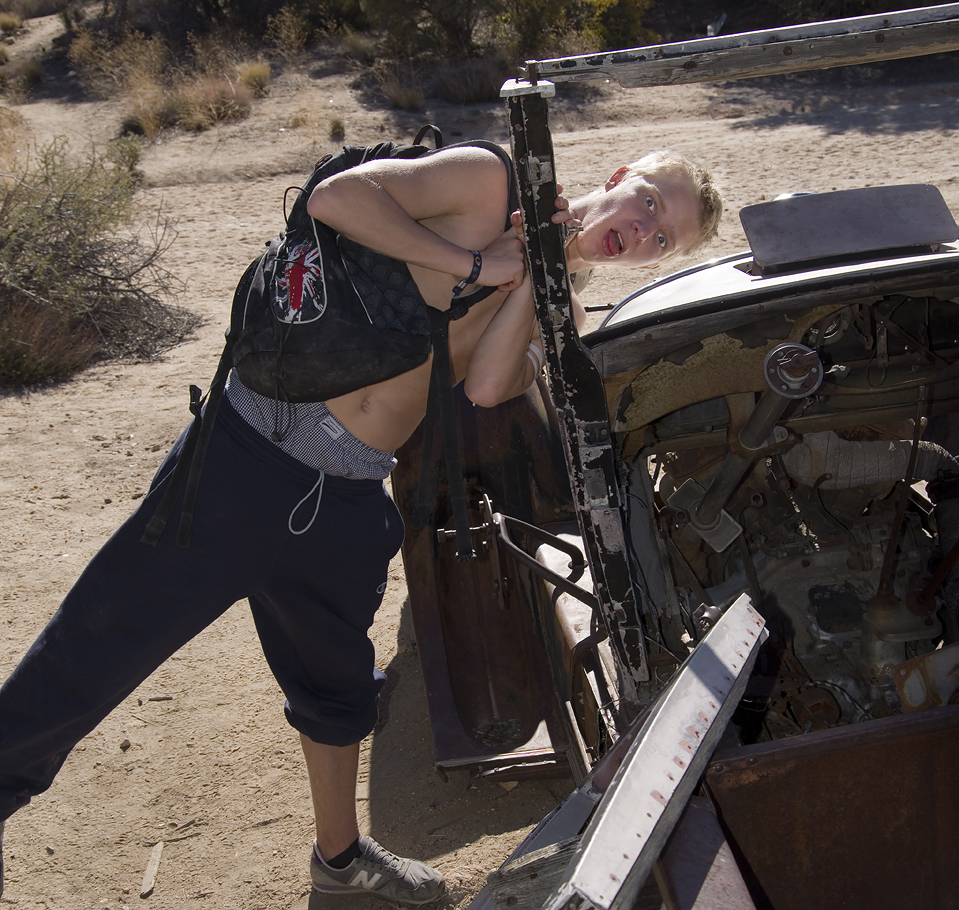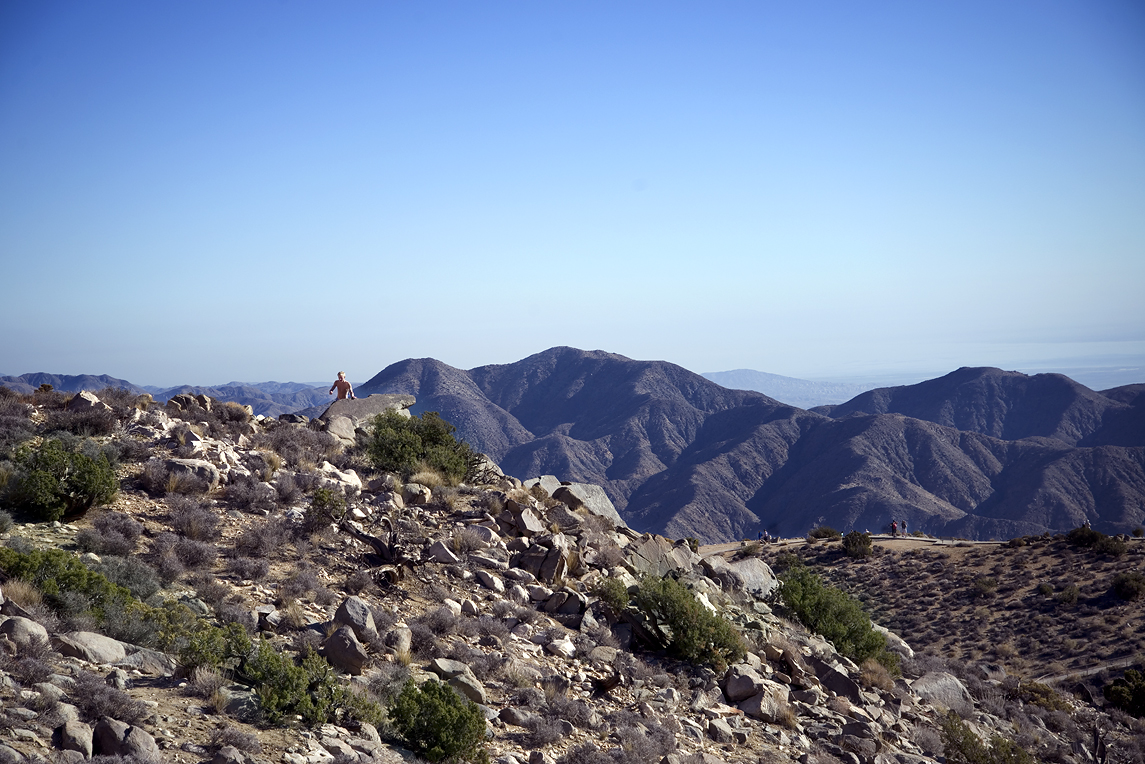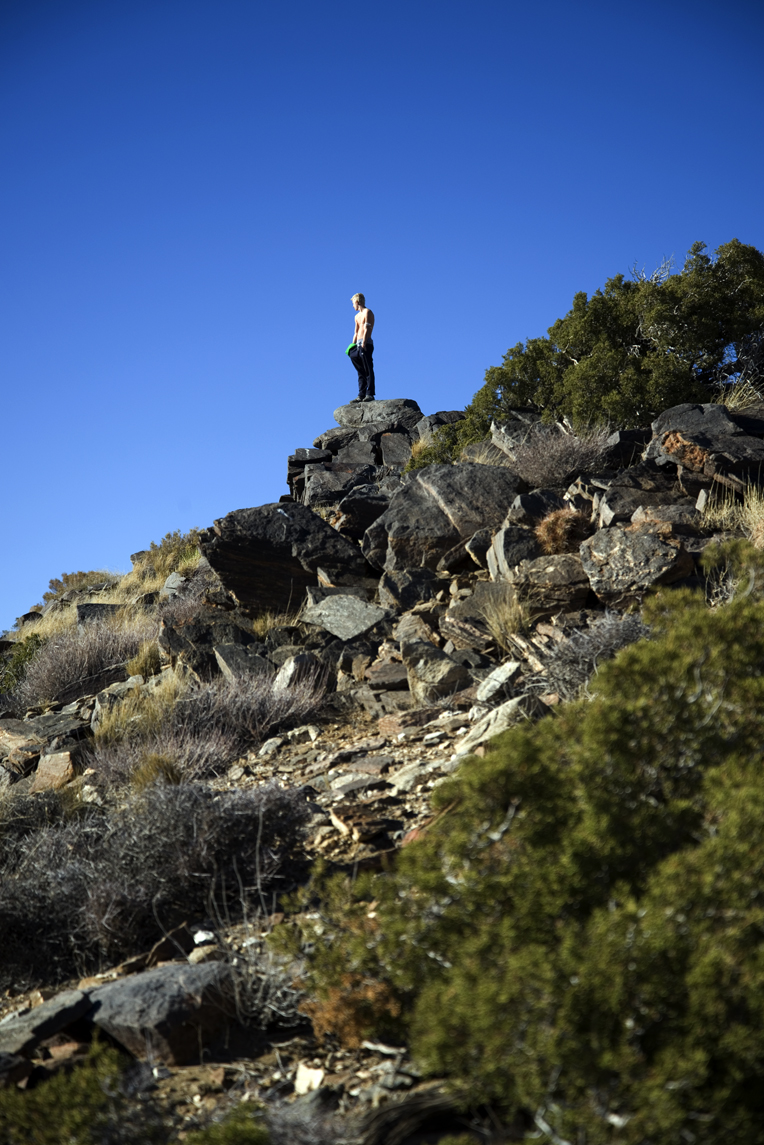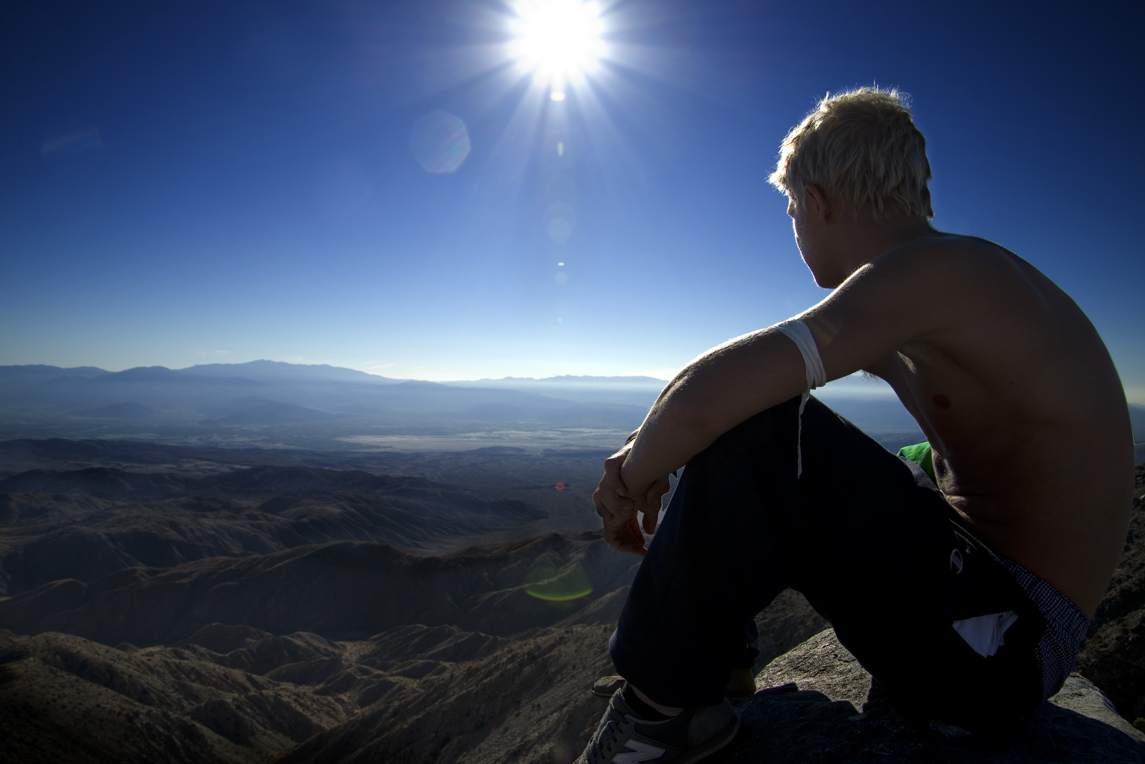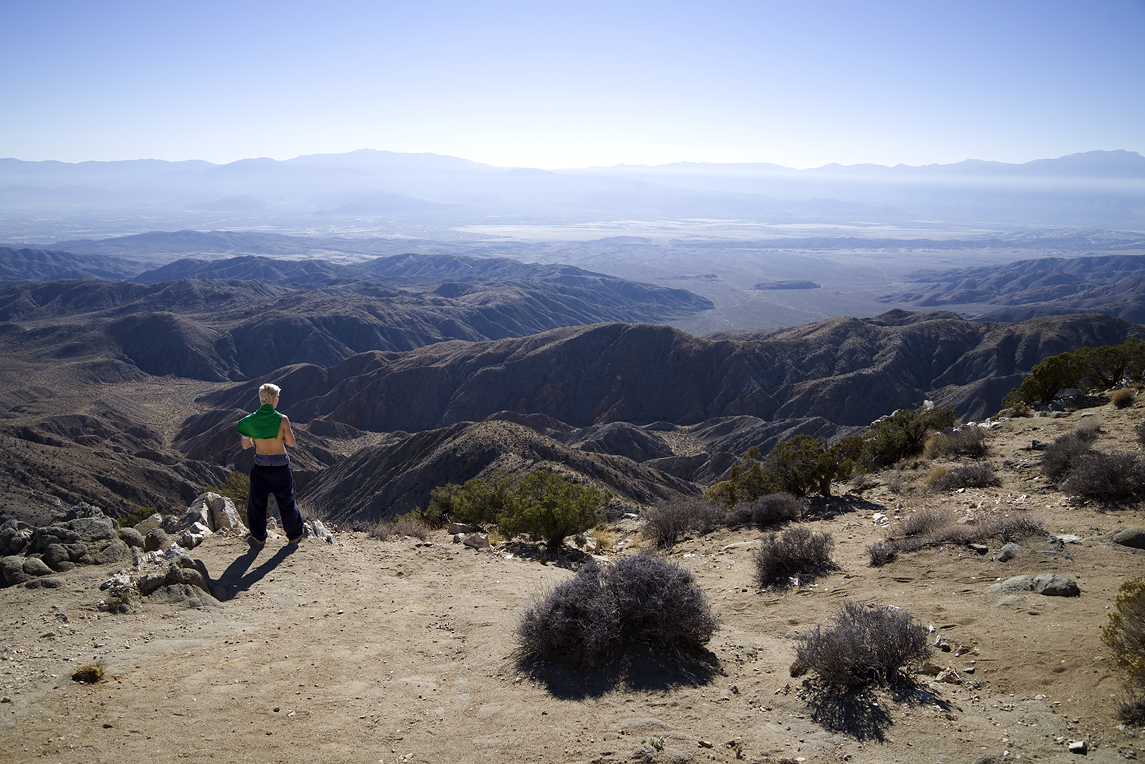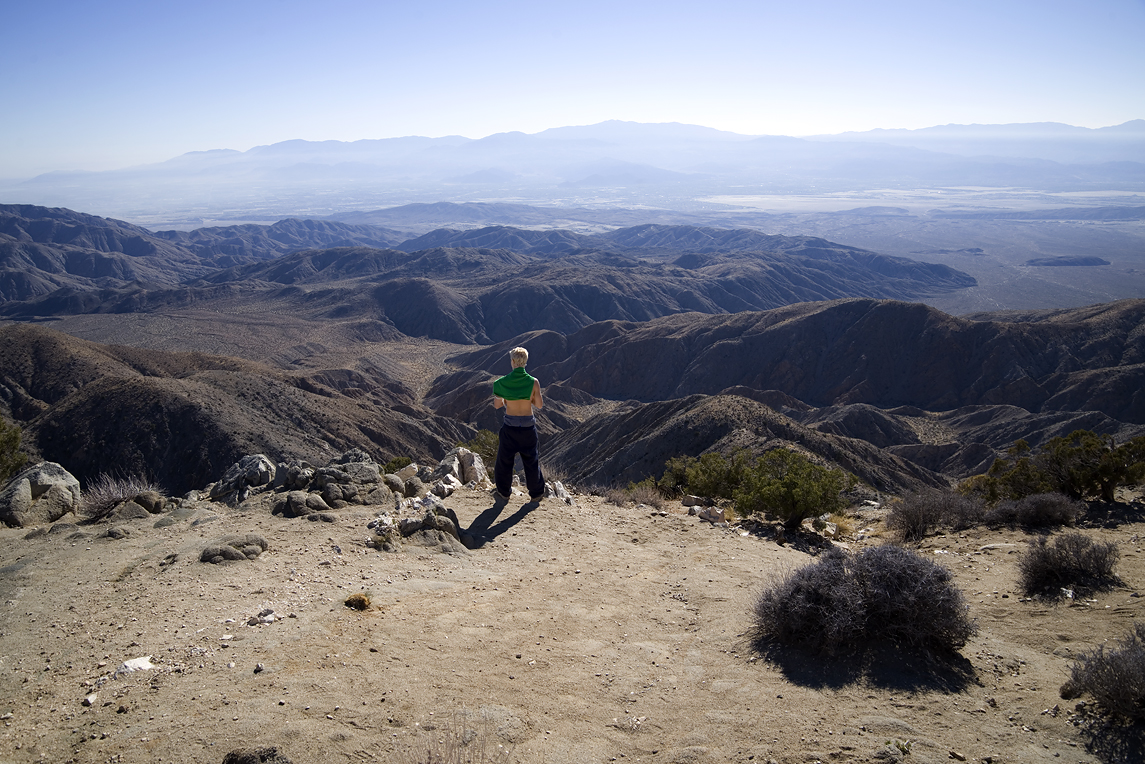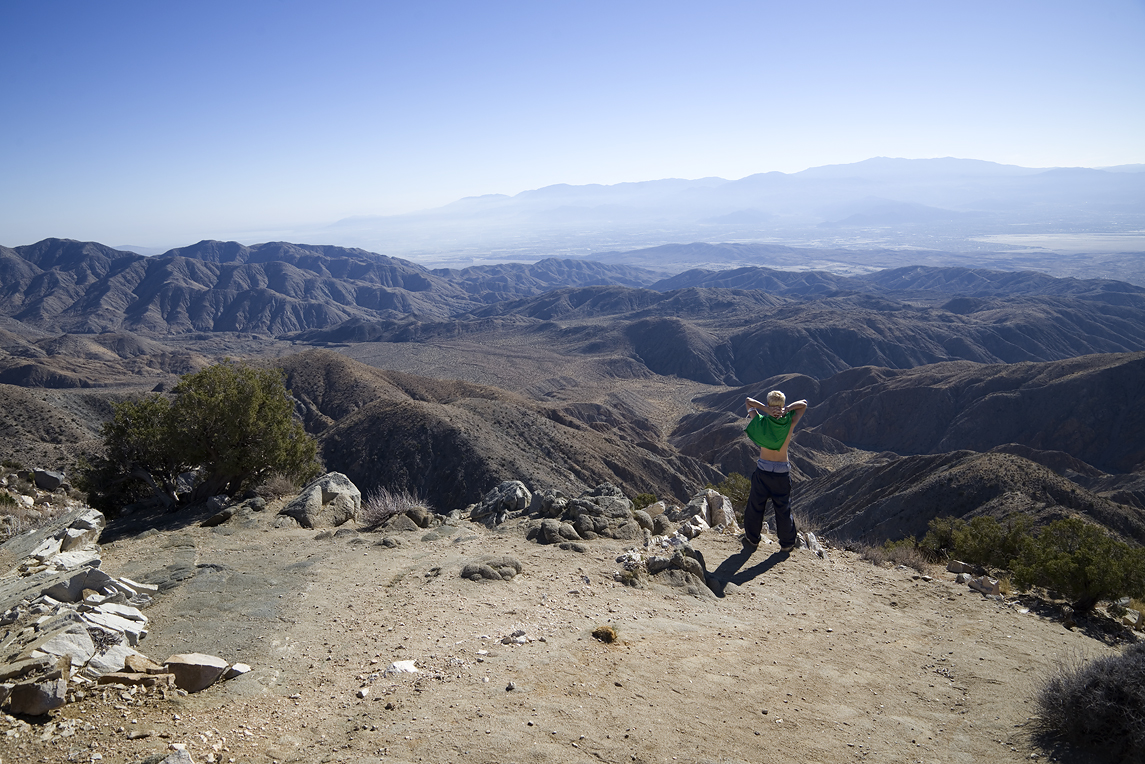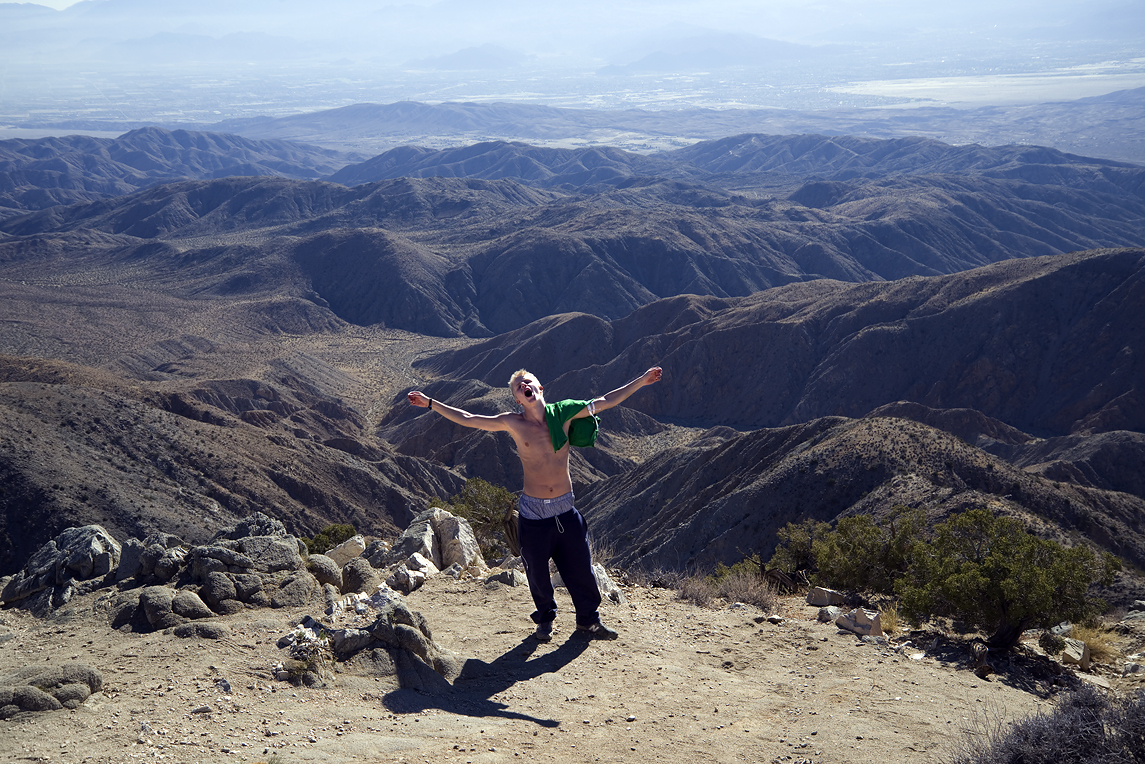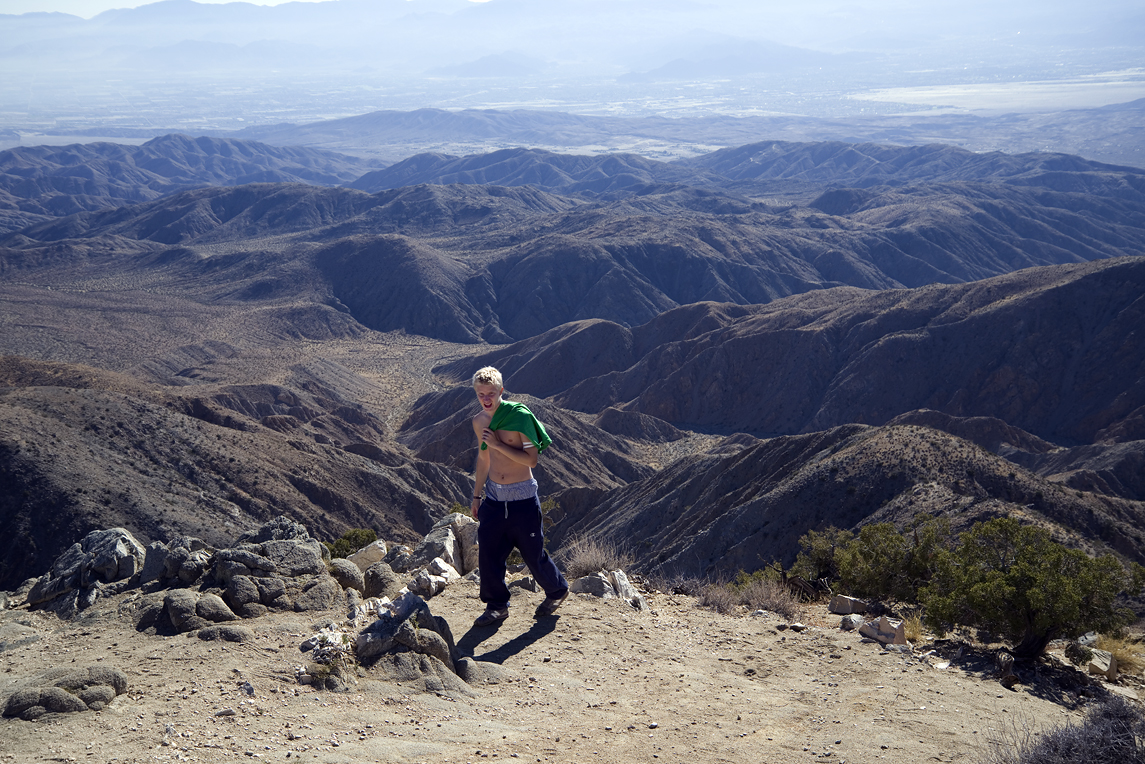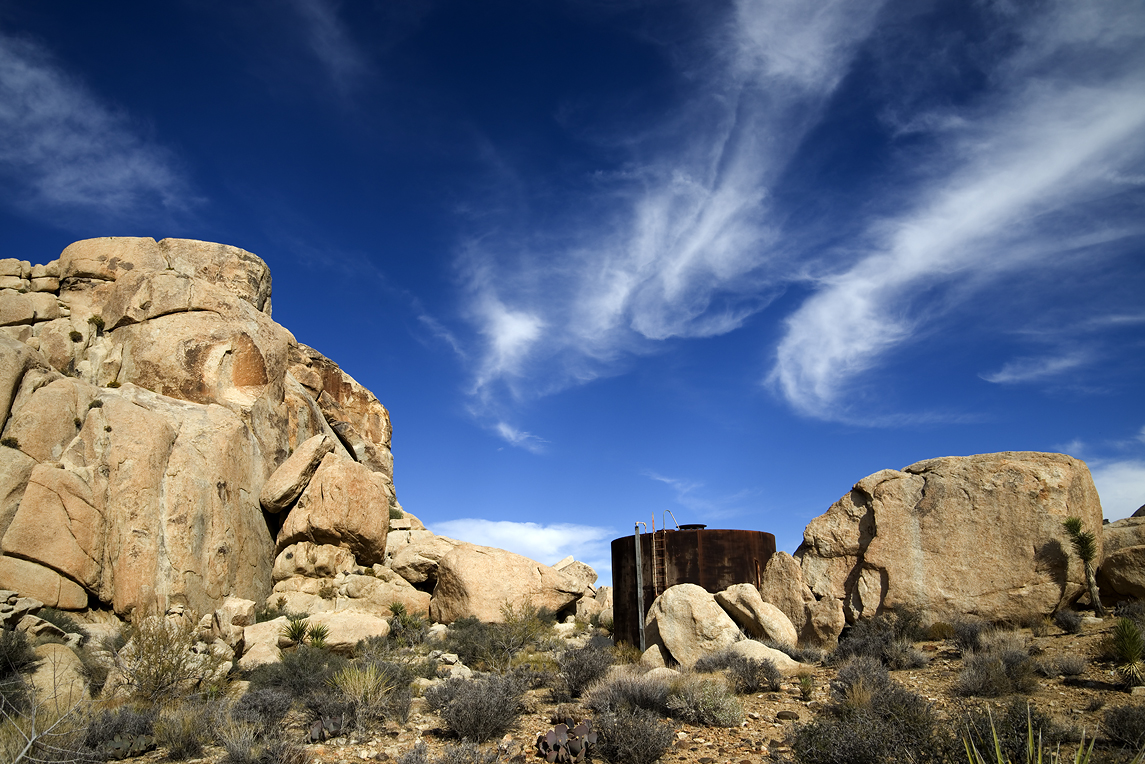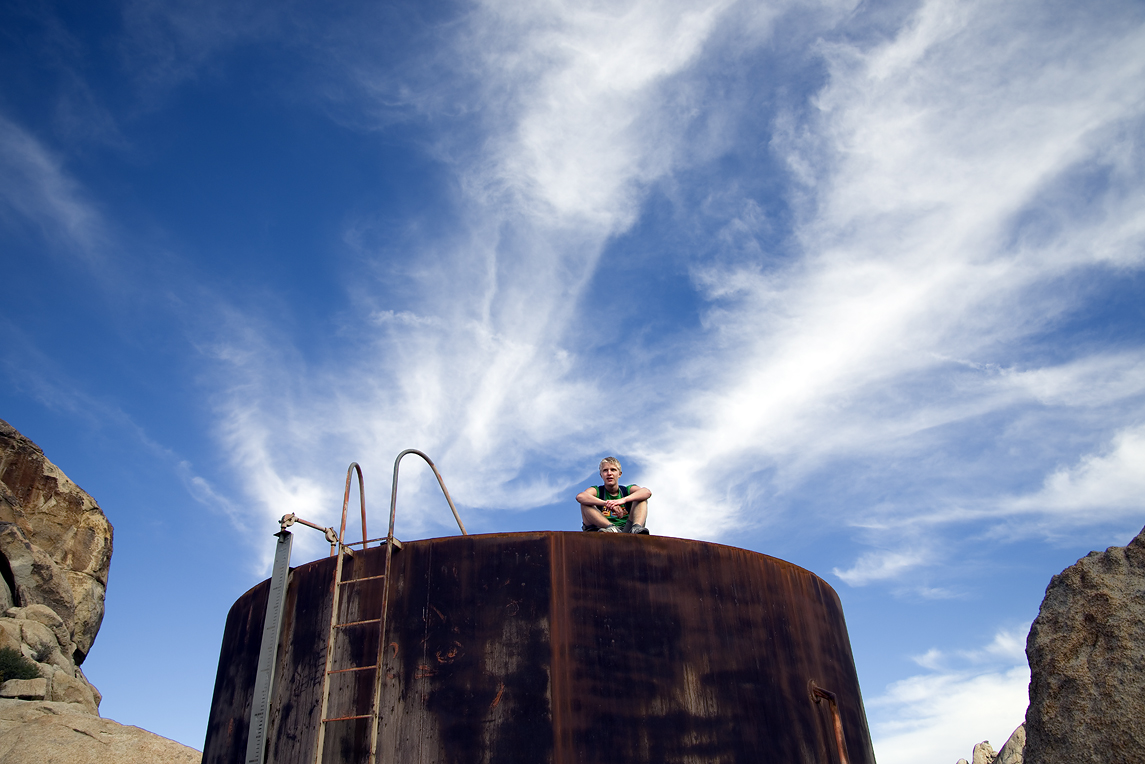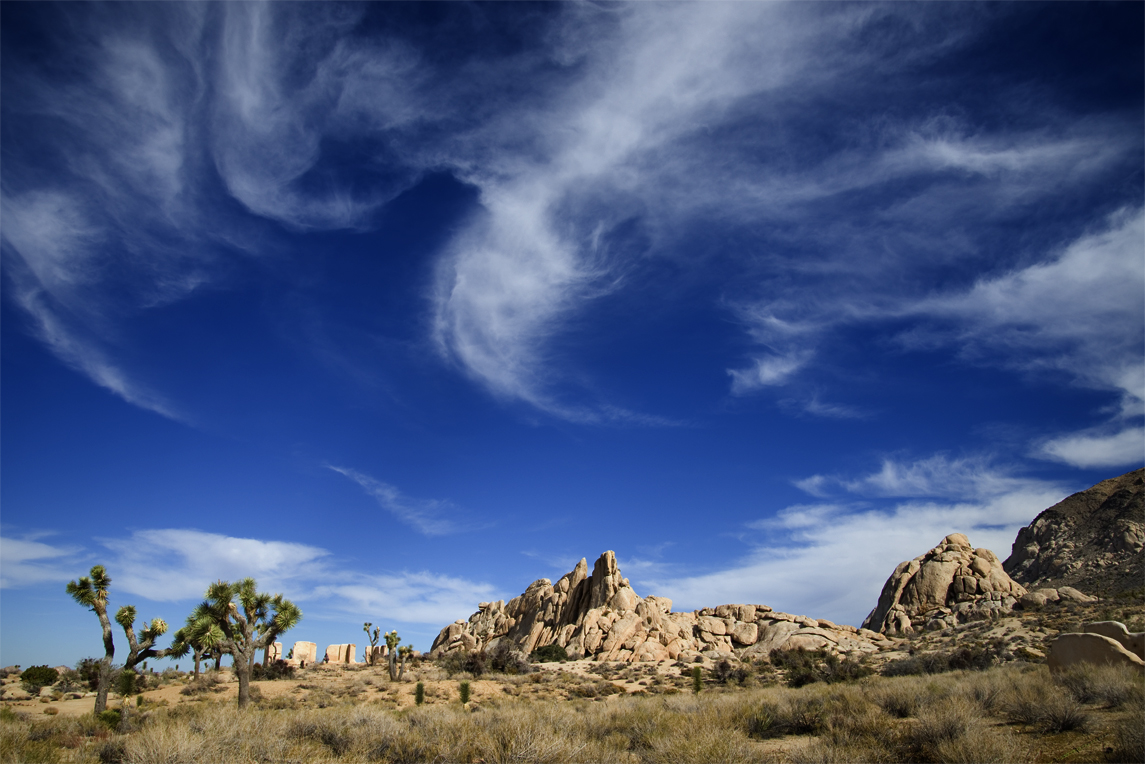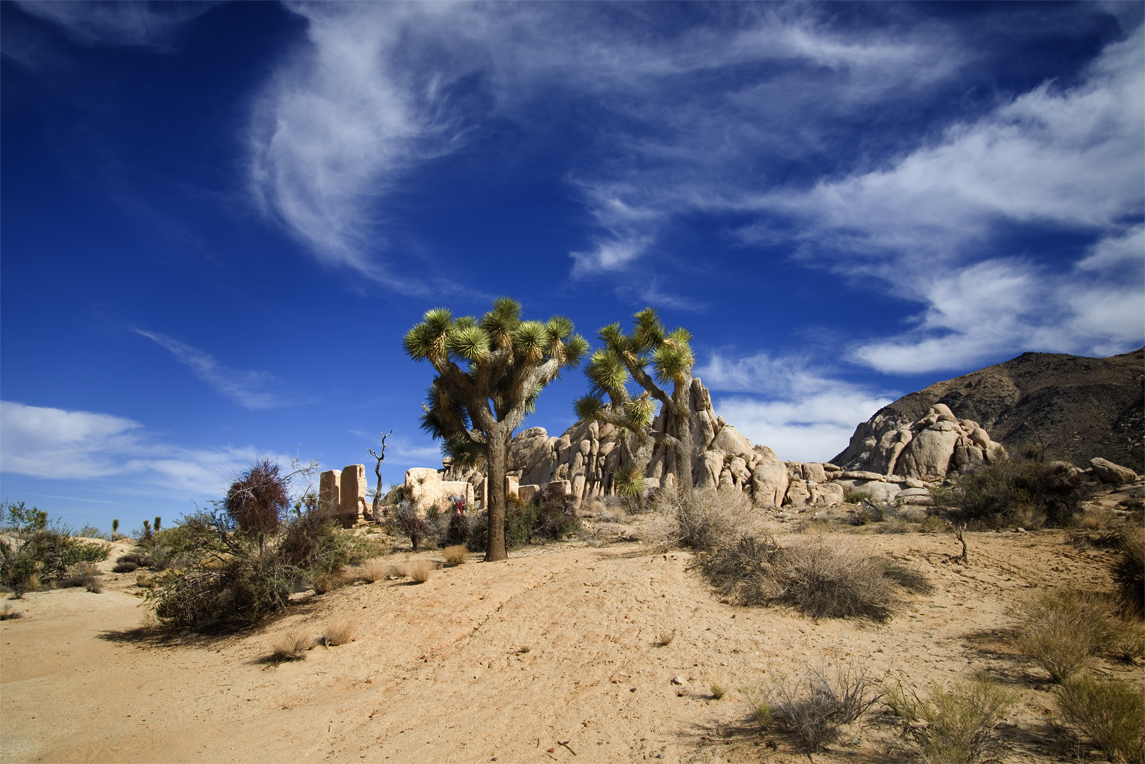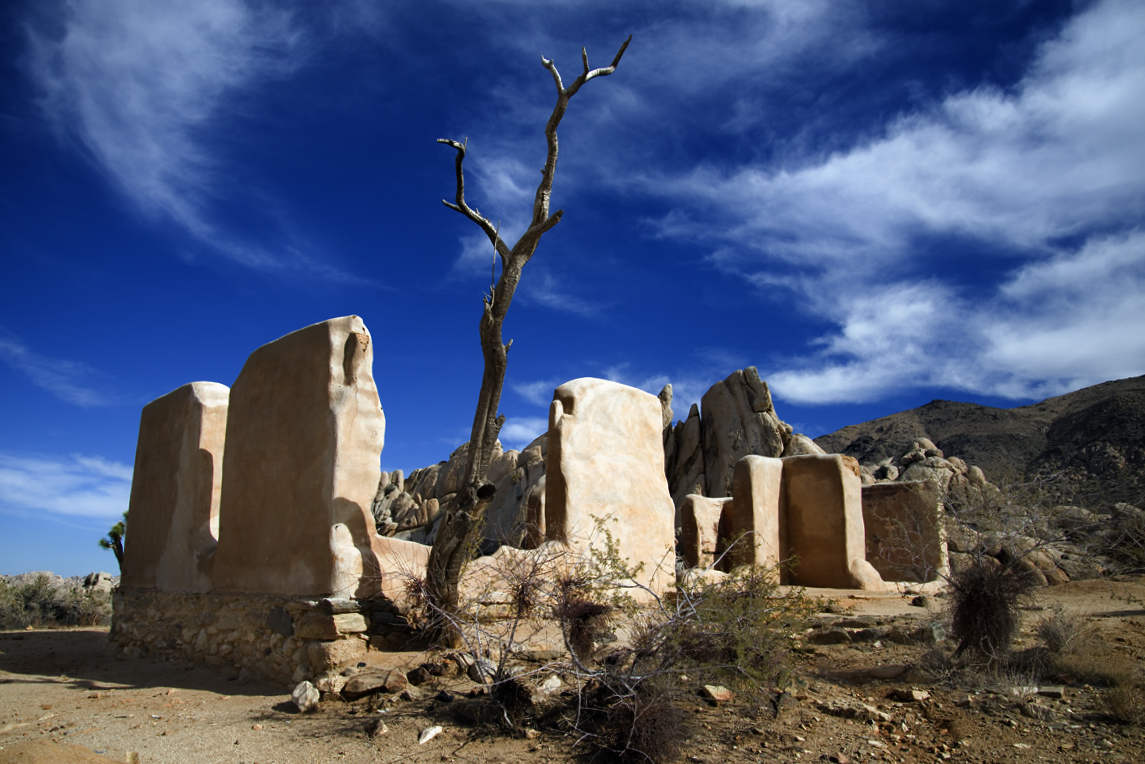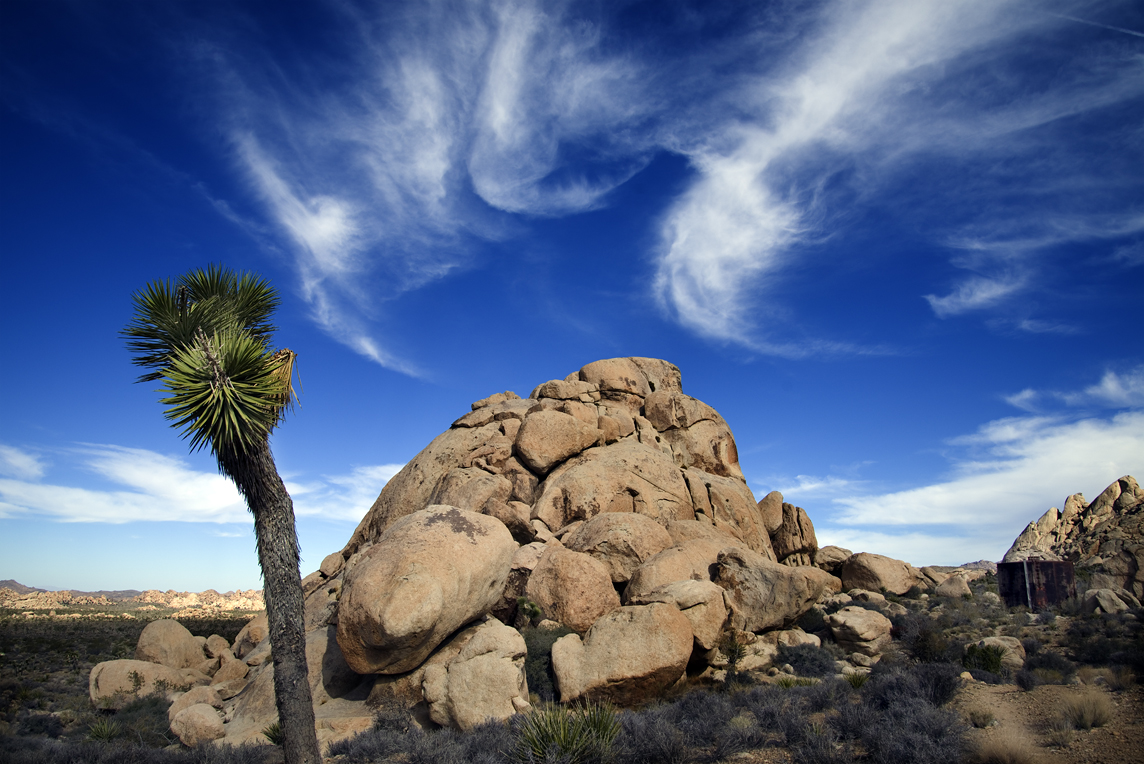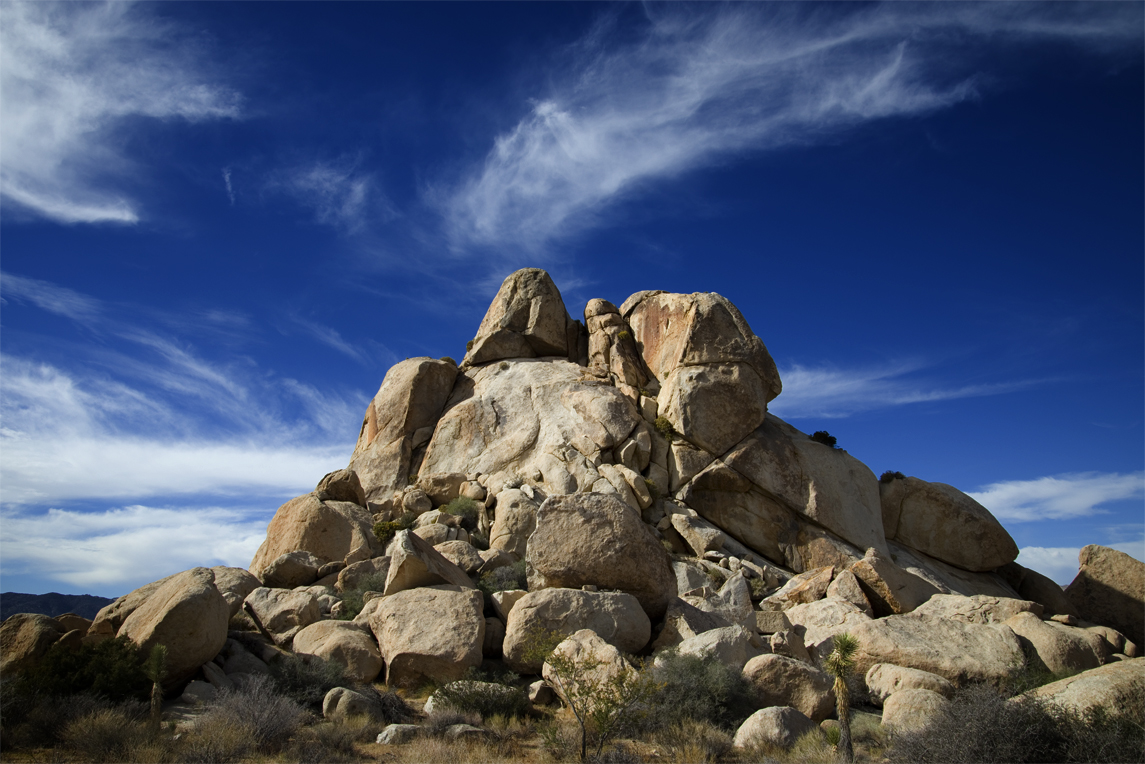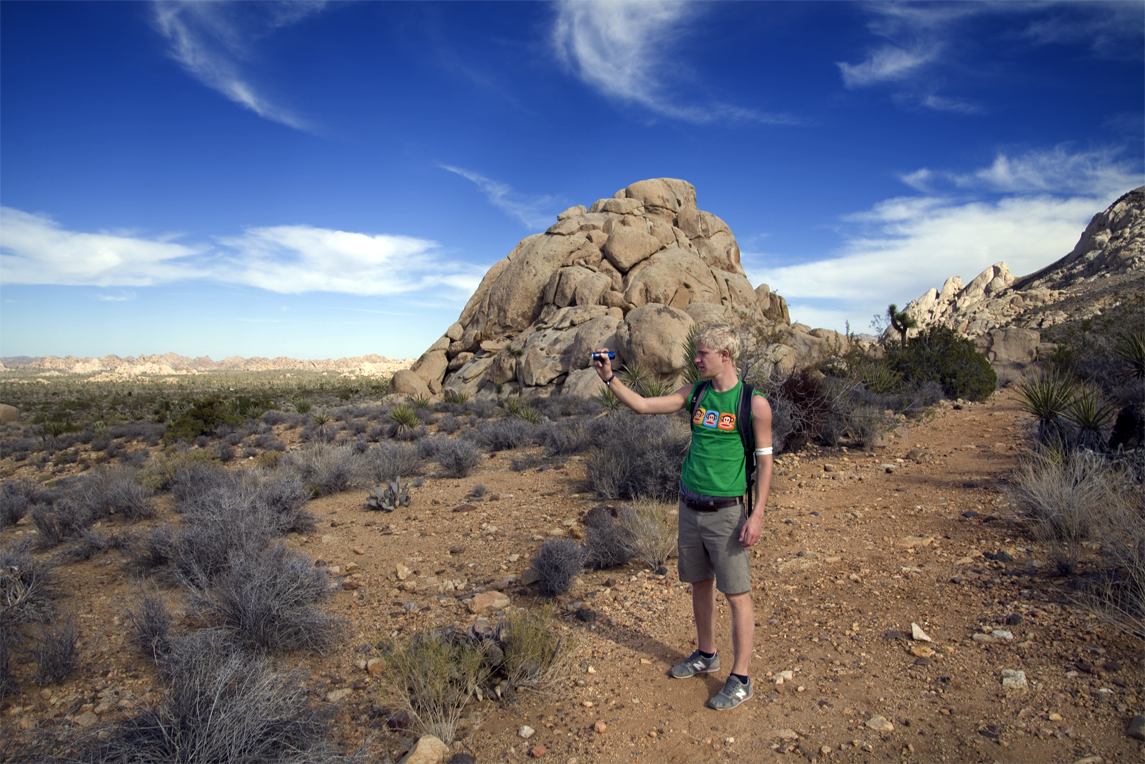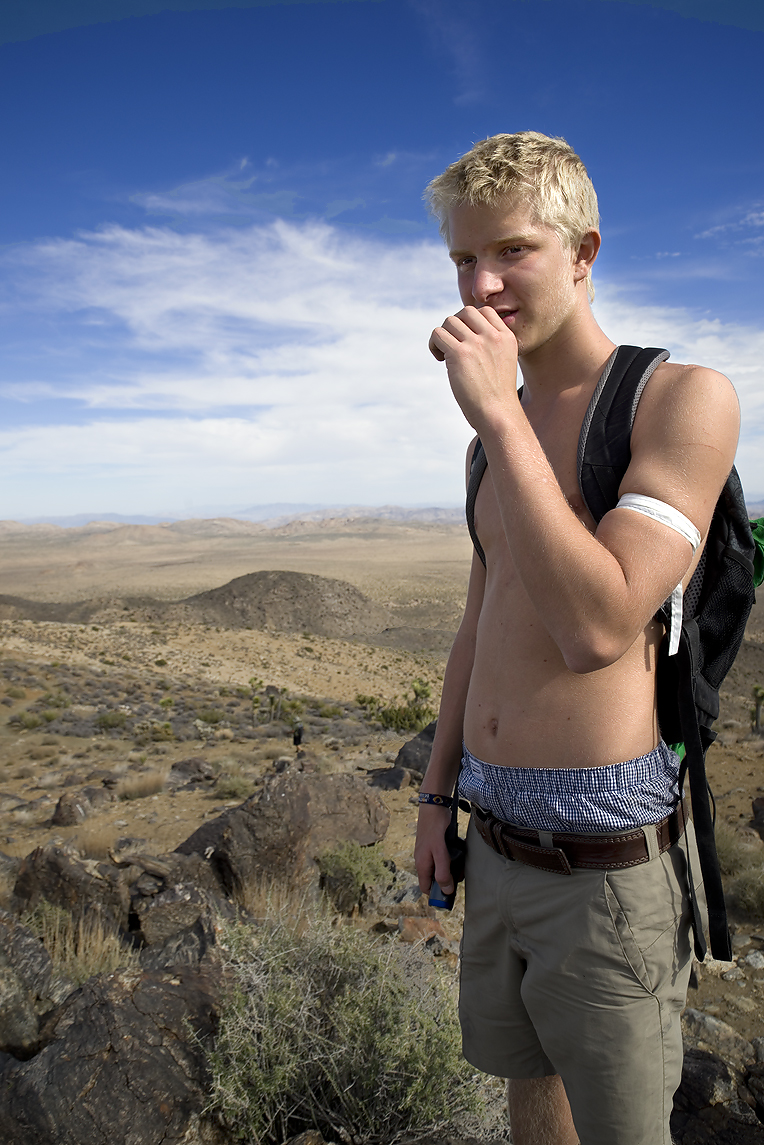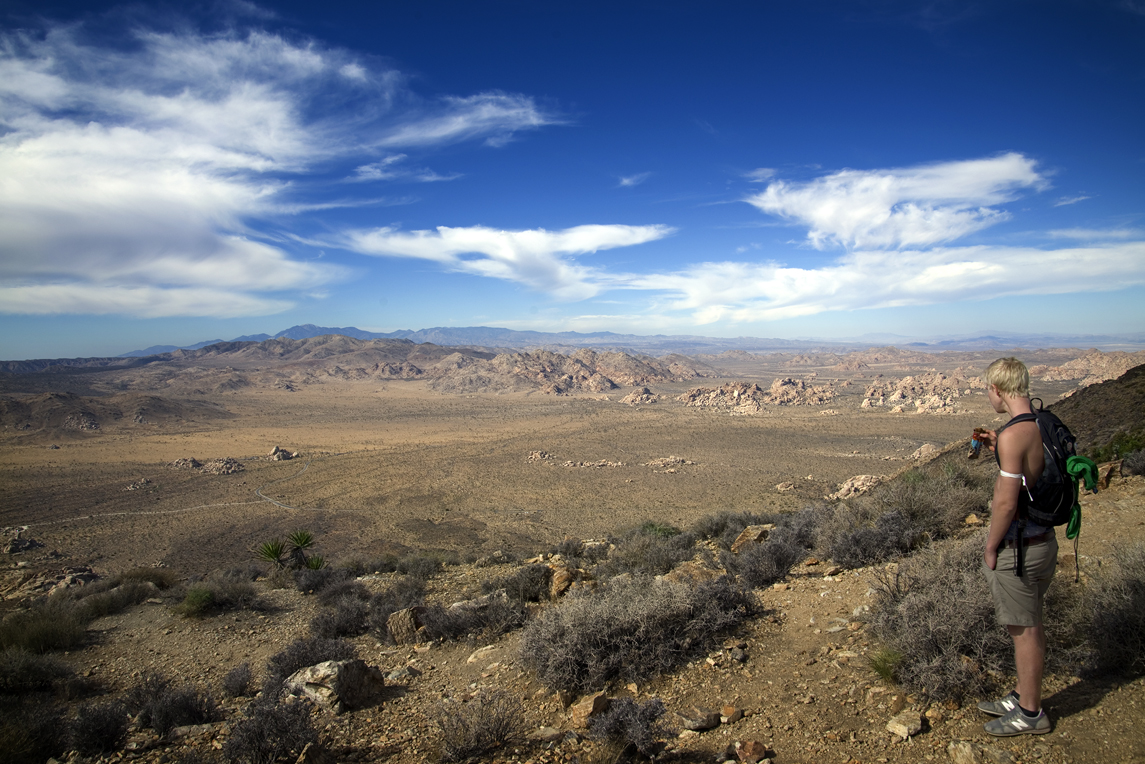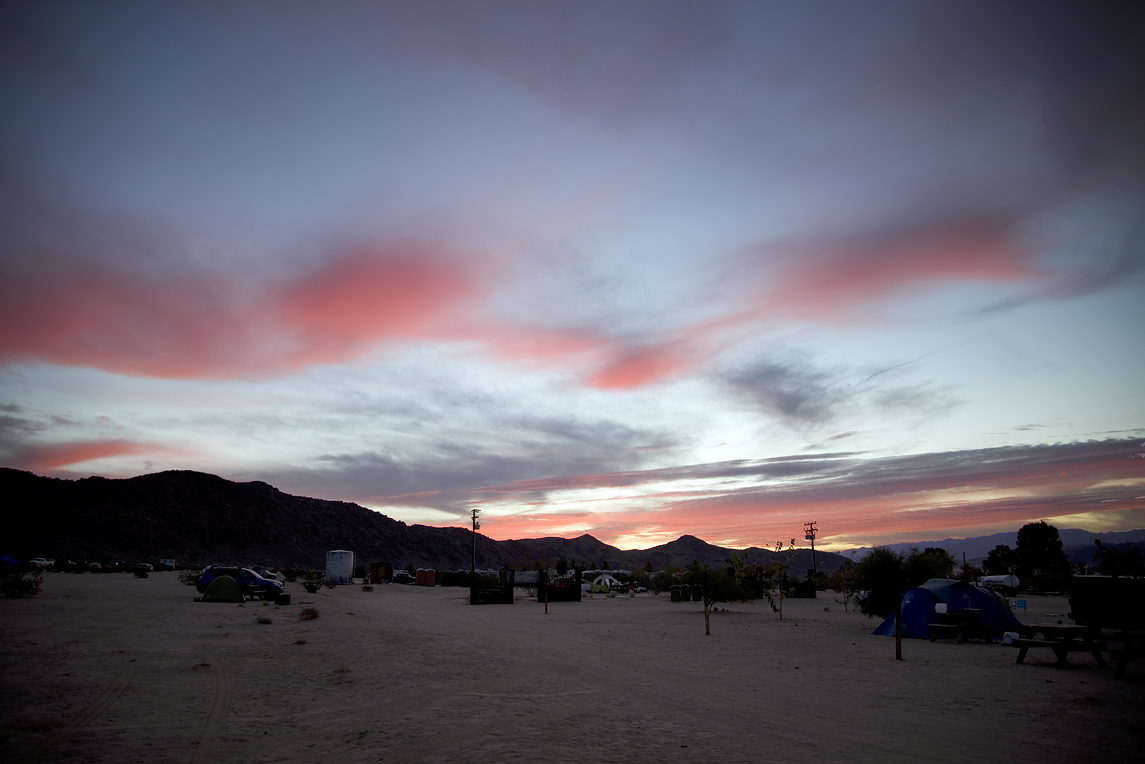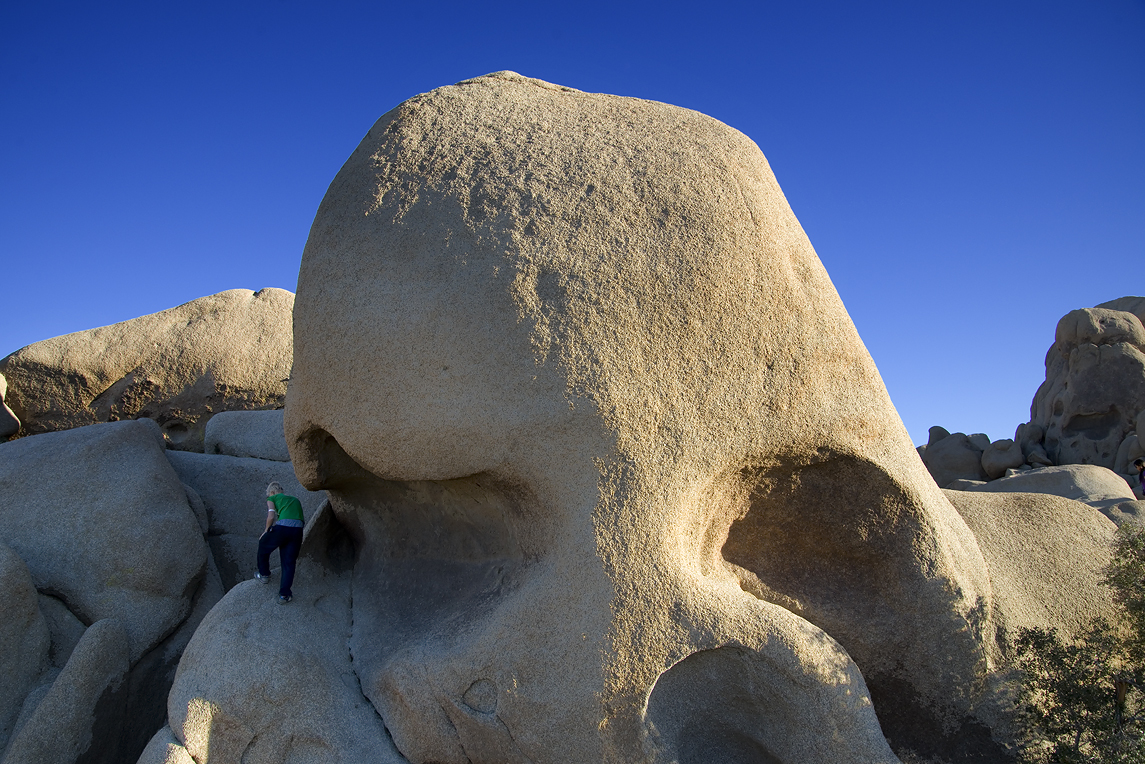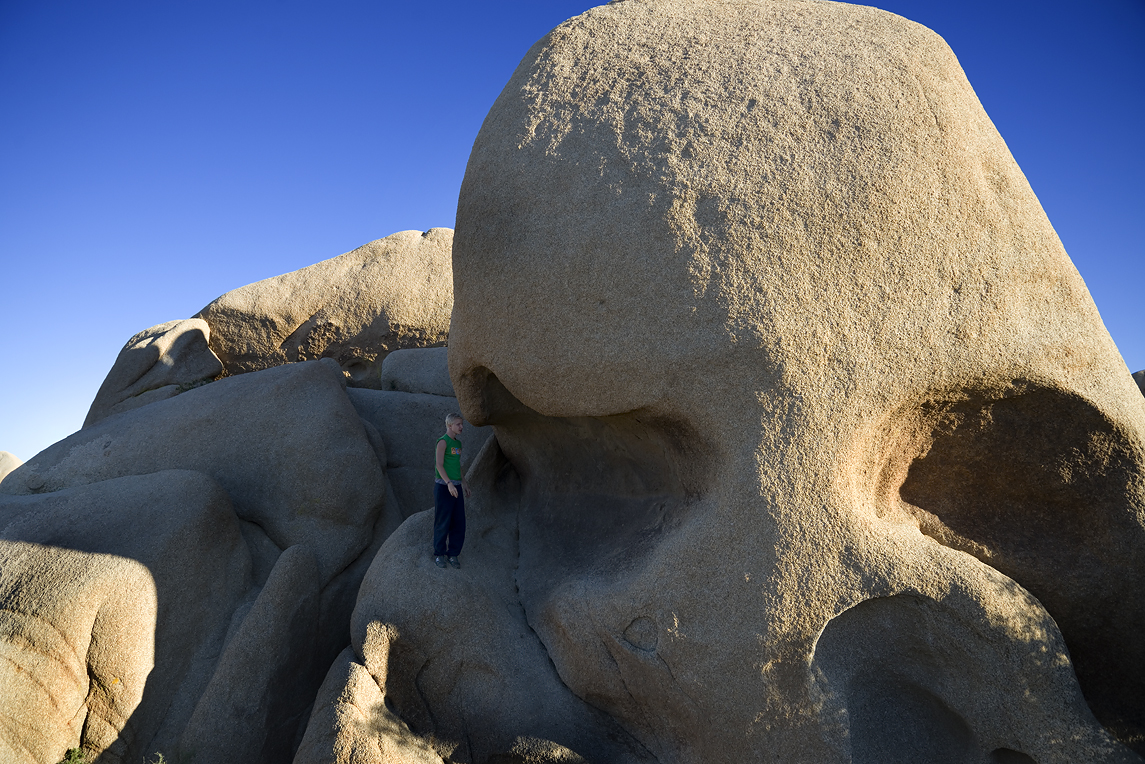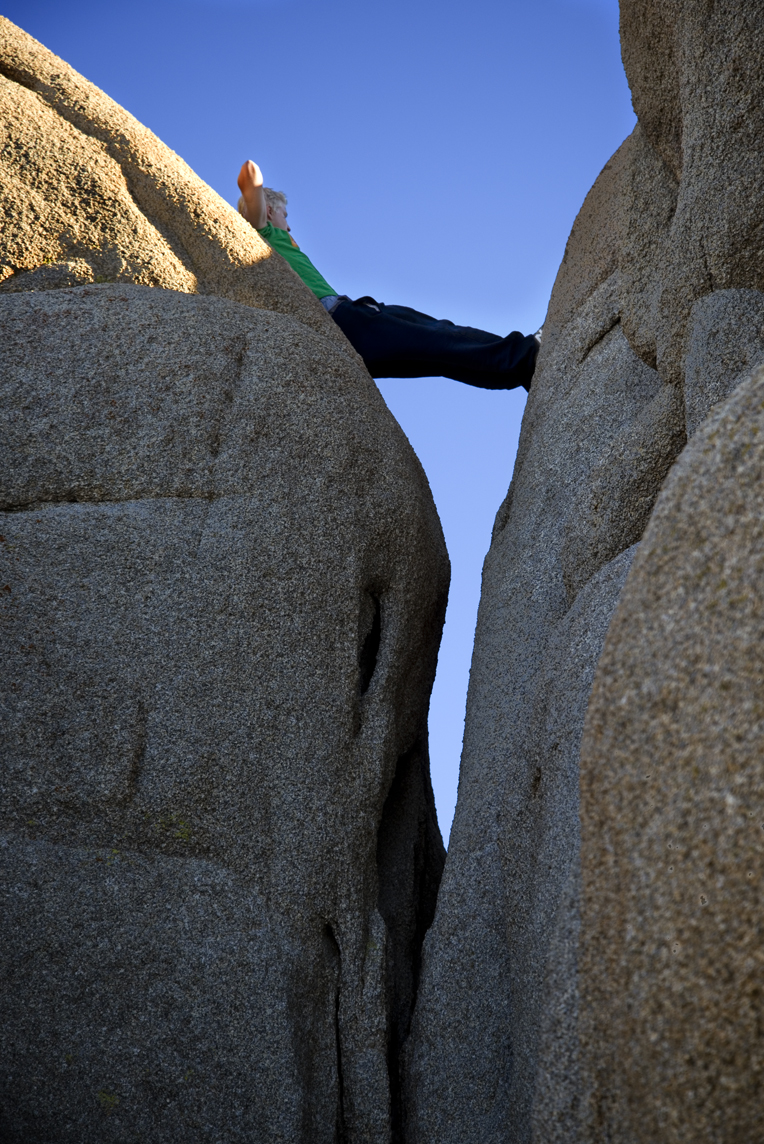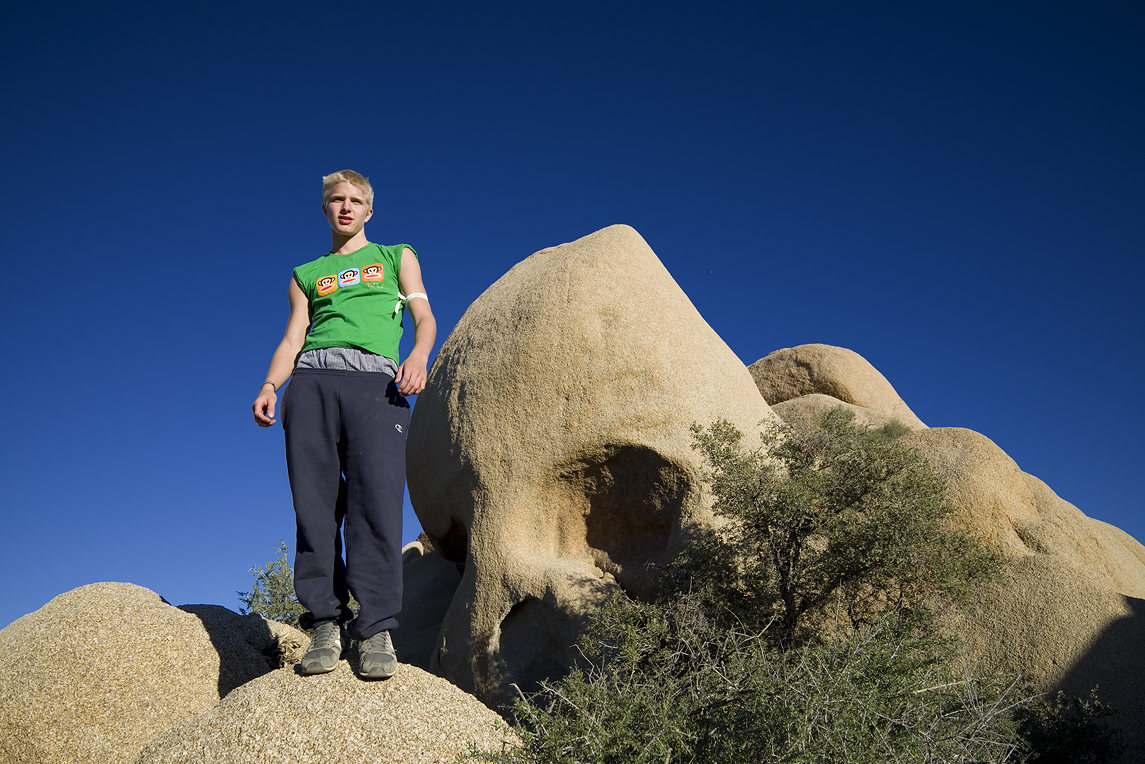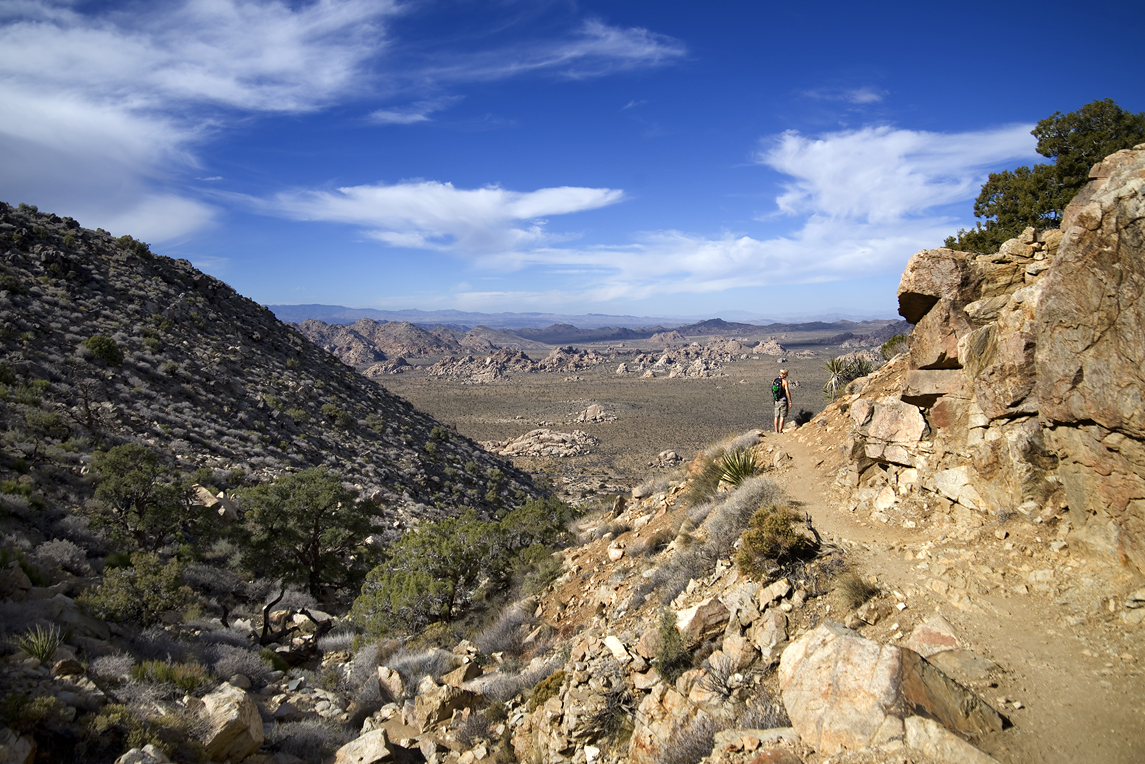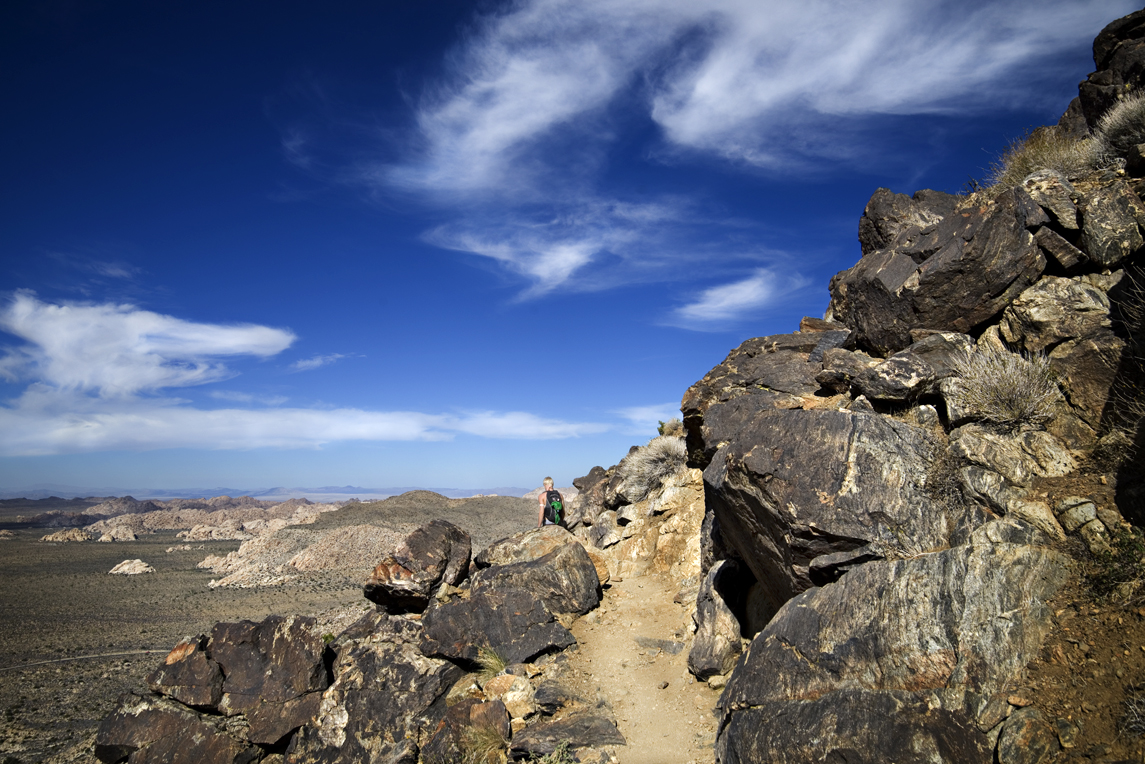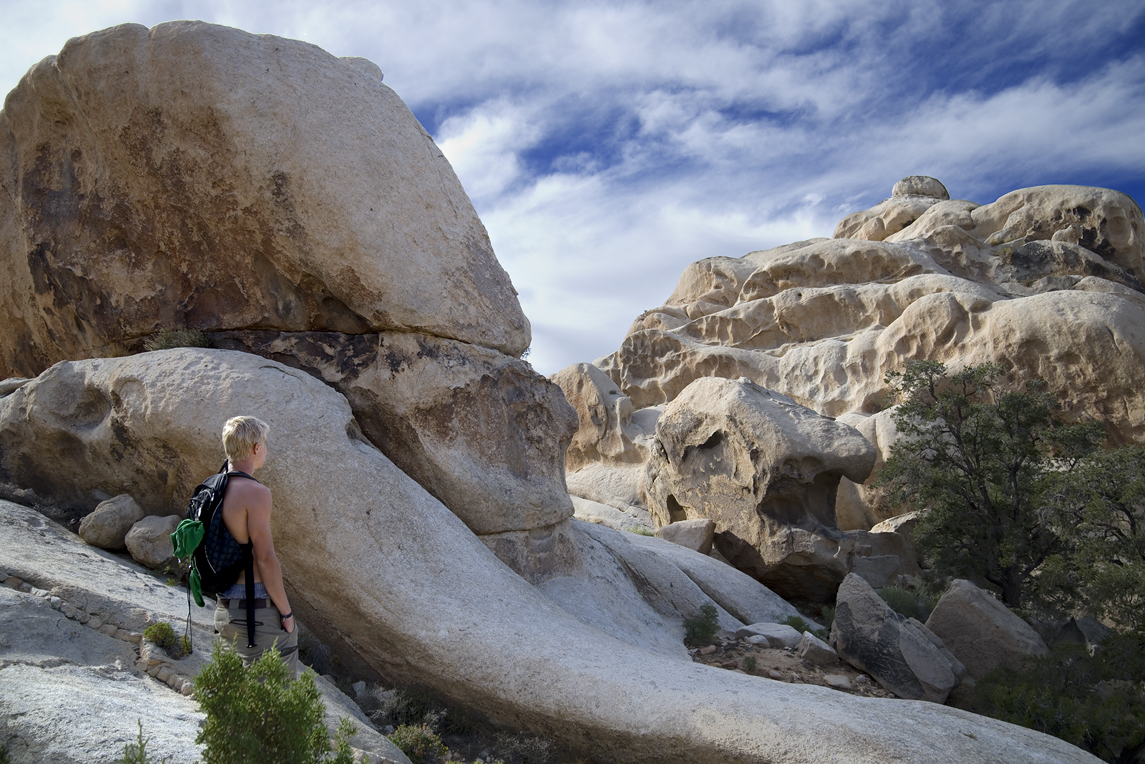Joshua Tree
The Joshua Tree plant is a true icon of the Mojave Desert and Joshua Tree National Park. But in fact, it’s not a tree! It’s part of the yucca family. The “tree” grows to over 40 feet and produces blooms from February through April. Summer is severe with relentless sunshine, little water, and temperatures over 100 degrees. Yet it is the home to numerous desert birds and critters including the common raven.
Matth at rest during his climb to the top of this pile of huge boulders.
There are vast tracks of giant boulder piles in Joshua Tree. The rock piles began underground eons ago as a result of volcanic activity. Granite magma rose deep within the earth. As the granite cooled and crystalized underground, the cracks and joints seen here were formed. The granite continued to push up. Contact with groundwater widened the cracks and rounded the boulders. As surface soil eroded, these tall large piles were fully exposed as we see them today.
These are the top two boulders from the boulder pile in the previous photo.
The decsent.
Click here: Video footage of the climb http://youtu.be/4xzdmvs5Q-o
Campsites within Joshua Tree were full so we found a place nearby called Joshua Tree Lake Campground.
Matth setting up his new tent.
With the camp set, compass in hand, there was time to hike to the top of the nearby peak overlooking the campground.
An interesting site we saw from the top of the peak was this house in the middle of the desert.
It had piles of bottles and glass all about, sorted by color.
Bottles, bottles – piles everywhere. Also metal pans and machinery parts. There’s a robot-like creation.
And a wall made bottles.
Sunset, November 8, 2013. Joshua Tree Lake Campground. My VW and Matth’s tent.
Maple, Sausage, and Egg biscuit “Breakfast In Bed.”
Stabbed by the spear of a Joshua Tree leaf.
More boulder climbing.
The hike to Wall Street Stamp Mill, a gold crushing mil closed since the 1940’s.
This may have been the boulder passage where my boots got tangled together causing me to fall and break my wrist.
Old abandoned truck near “Wall Street Stamp Mill.”
The Wall Street Stamp Mill. The site was named “Wall Street” by miners Oran Booth and Earl McInnes who laid claim here in 1928. William F. Keys took over the claim in 1930 and built this stamp mill to process gold ore from his mine here and other mines in the desert. It is a complete gold ore crushing mill featuring late 19th Century two-stamp mill machinery. It is on the National Register of Historic Sites.
Yet another abandoned vehicle near the mill.
Keys View
Water tank for Ryan Ranch
At the western base of Ryan Mountain lie adobe ruins representing early turn of the century life in Joshua Tree National Park. What remains there today is the footprint left behind by the Ryan family, who came to Joshua Tree in the 1890s to manage and eventually acquire the Lost Horse Mine, the most successful mine in the area.
Ryan Ranch originally consisted of three adobe structures: a small one room structure of unknown purpose, a two room bunkhouse, and the main house. Wood and metal structures were eventually added to the site. While the main house is thought to have been built around 1896, the construction dates of the neighboring structures are unknown but thought to post date the main house.
In 1975, Ryan Ranch along with the Lost Horse Well, was added to the National Register of Historic Places (NRHP). The site was nominated as a historic district based on its profitable history and depiction of early mining life and, therefore, its local significance to Joshua Tree National Park and the surrounding communities.
Sunrise last day.
Skull rock.
Ryan Mountain
